Full text
PDF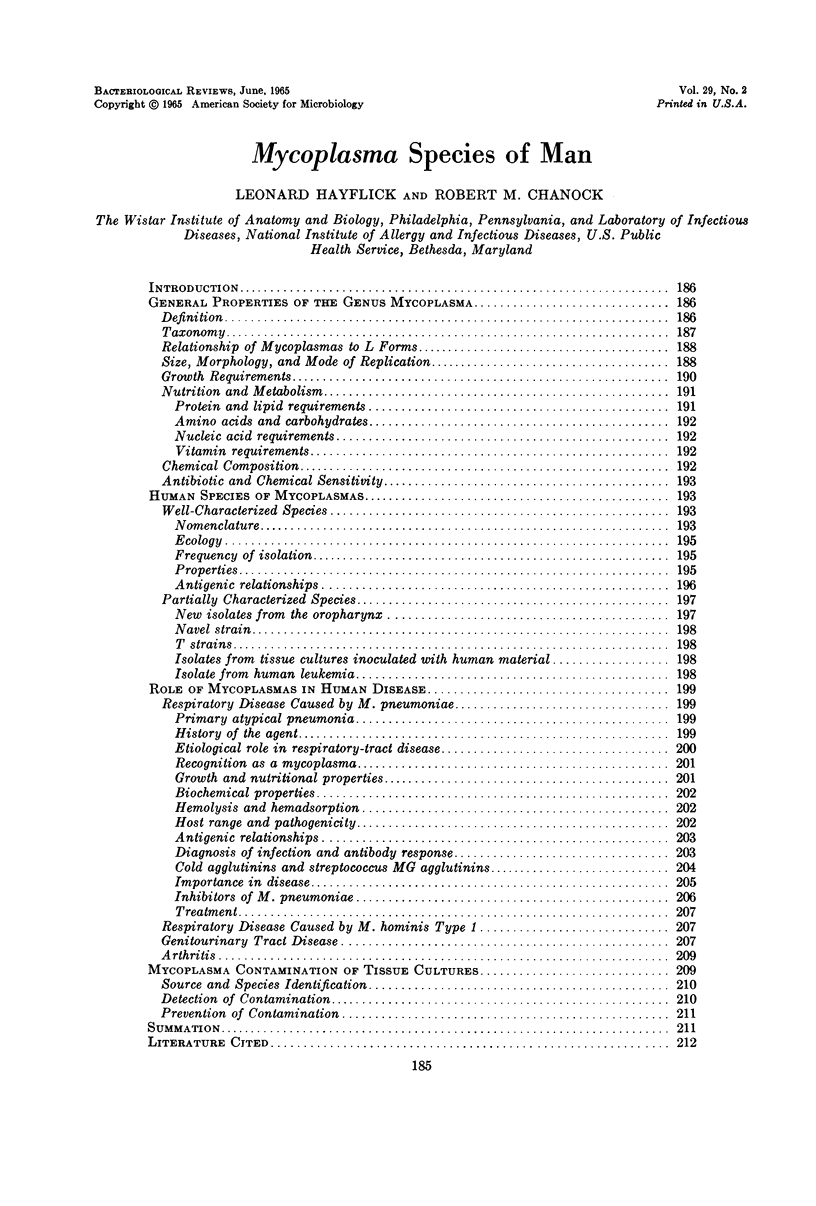

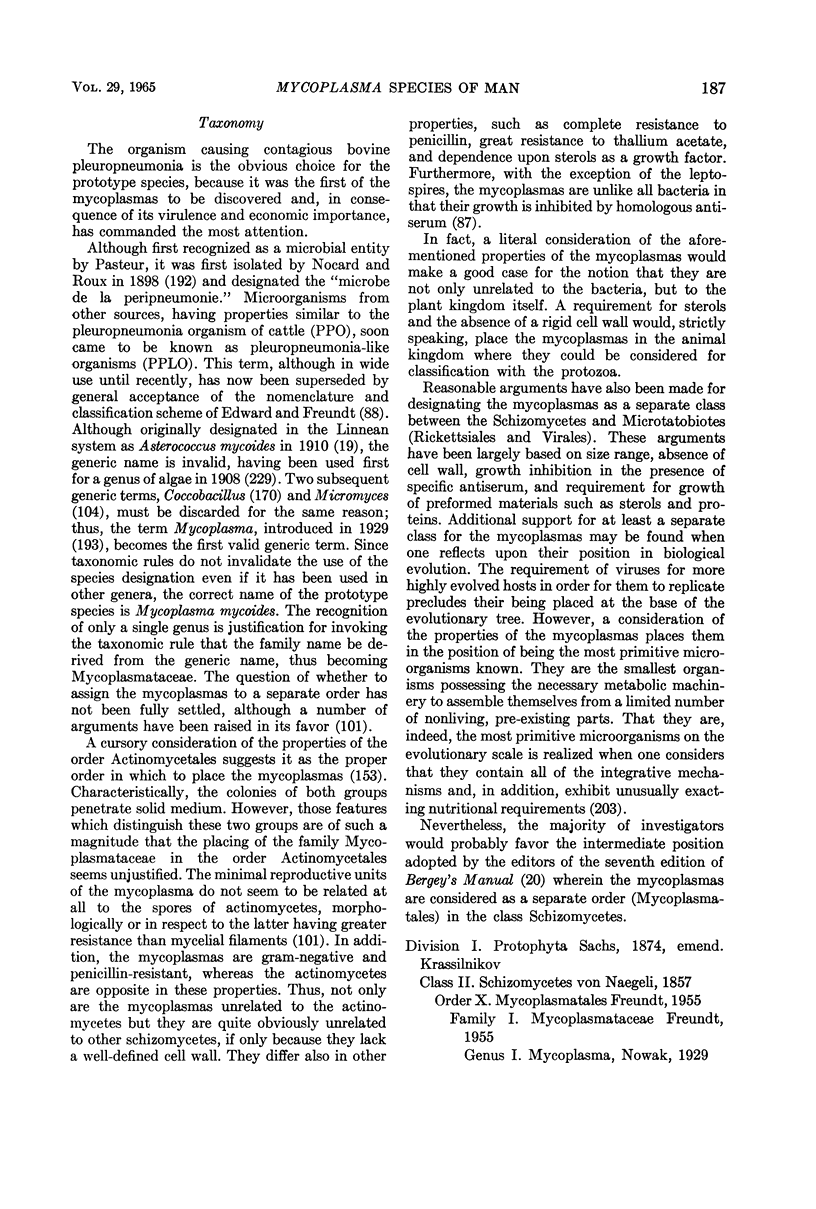
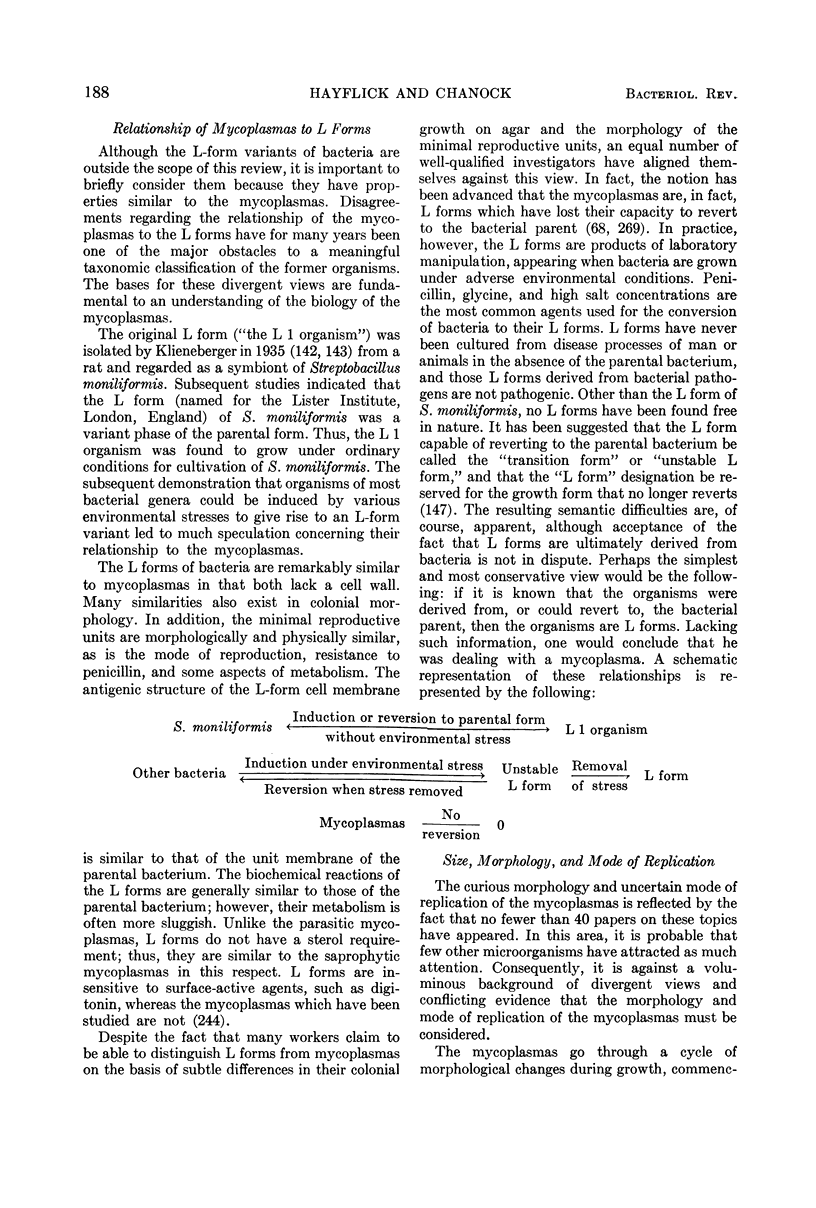
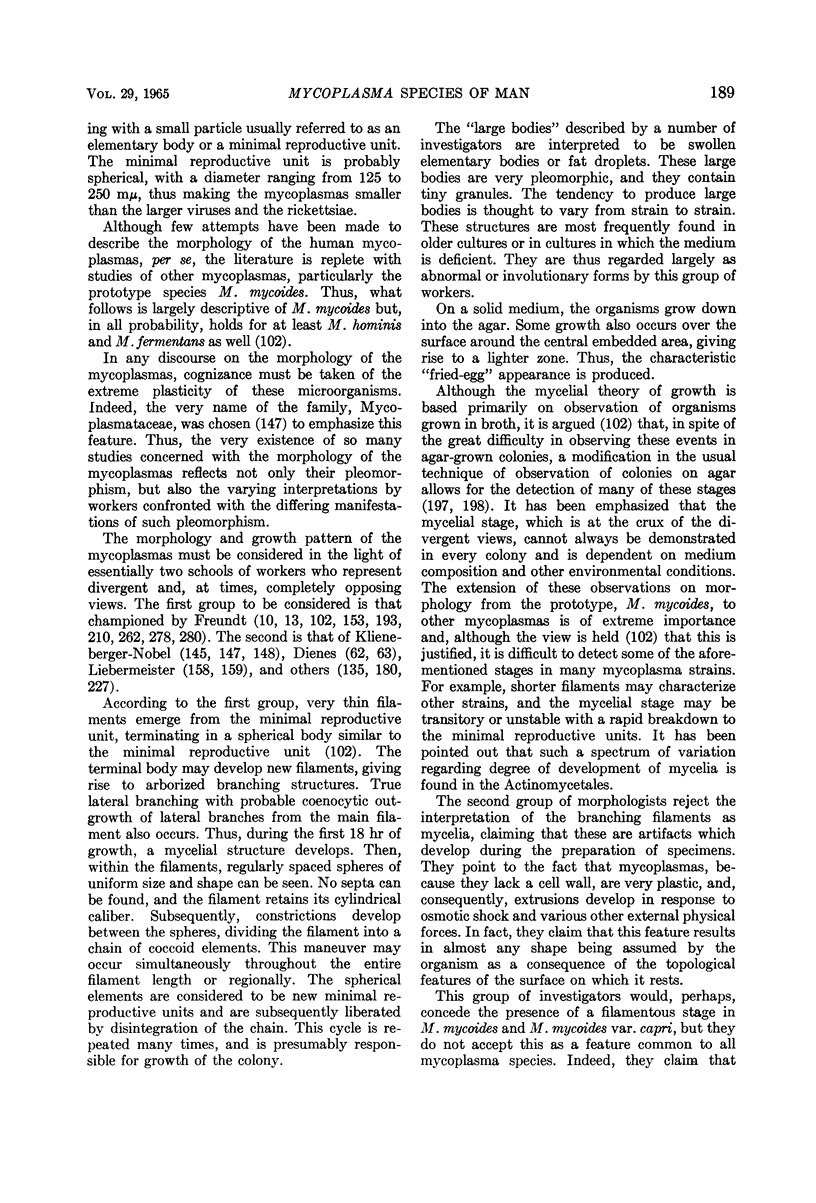
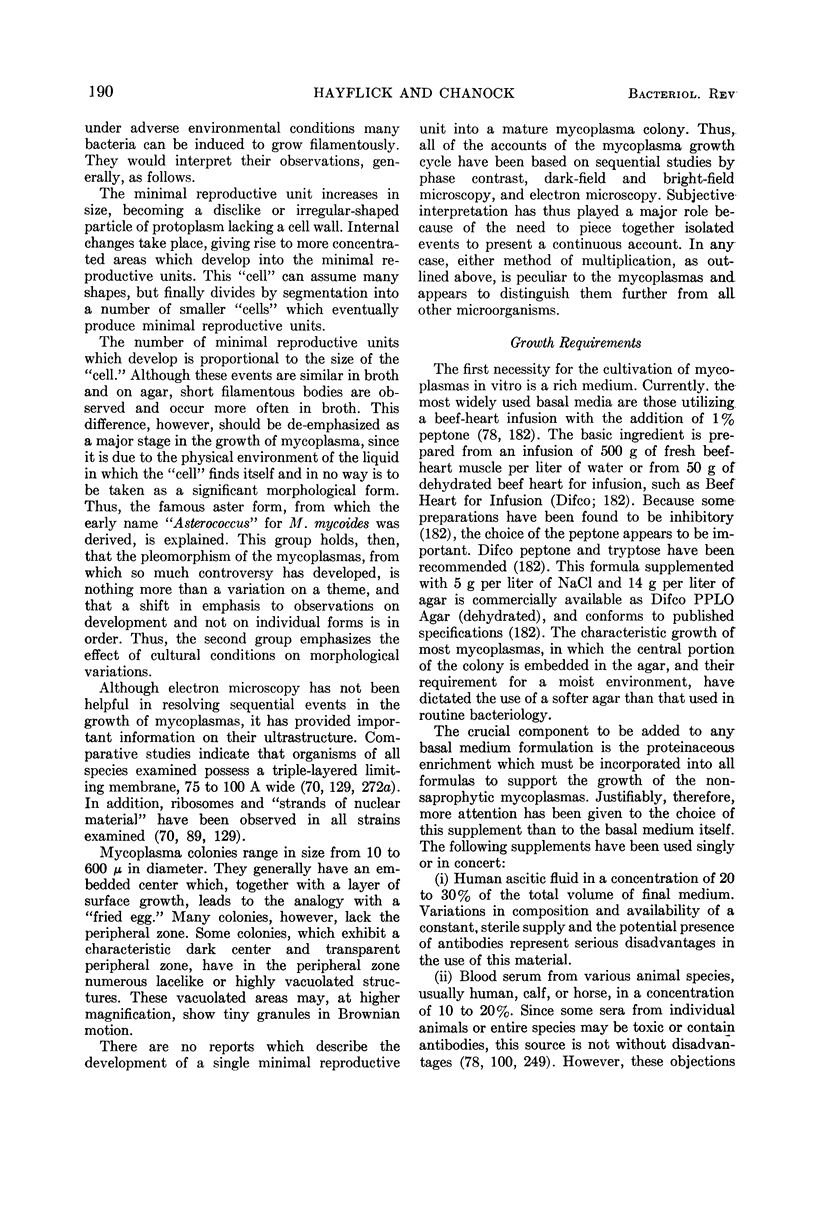
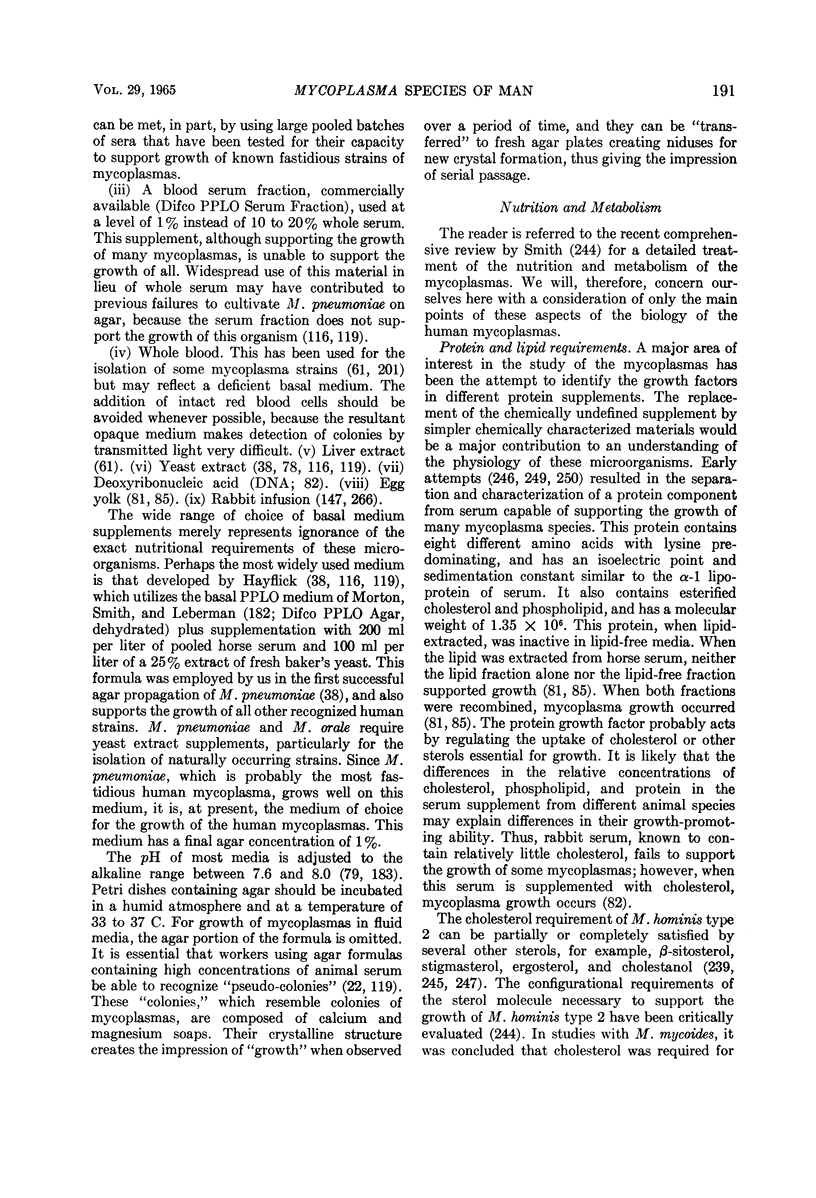
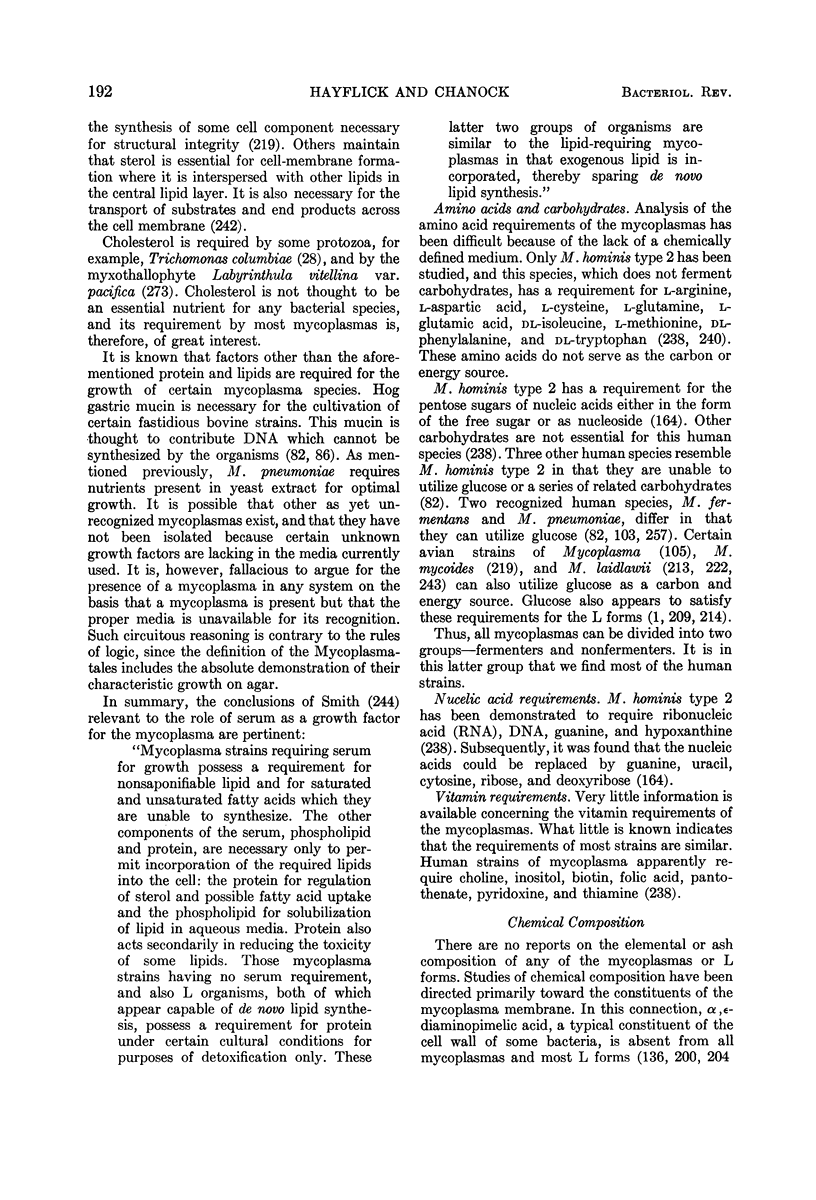
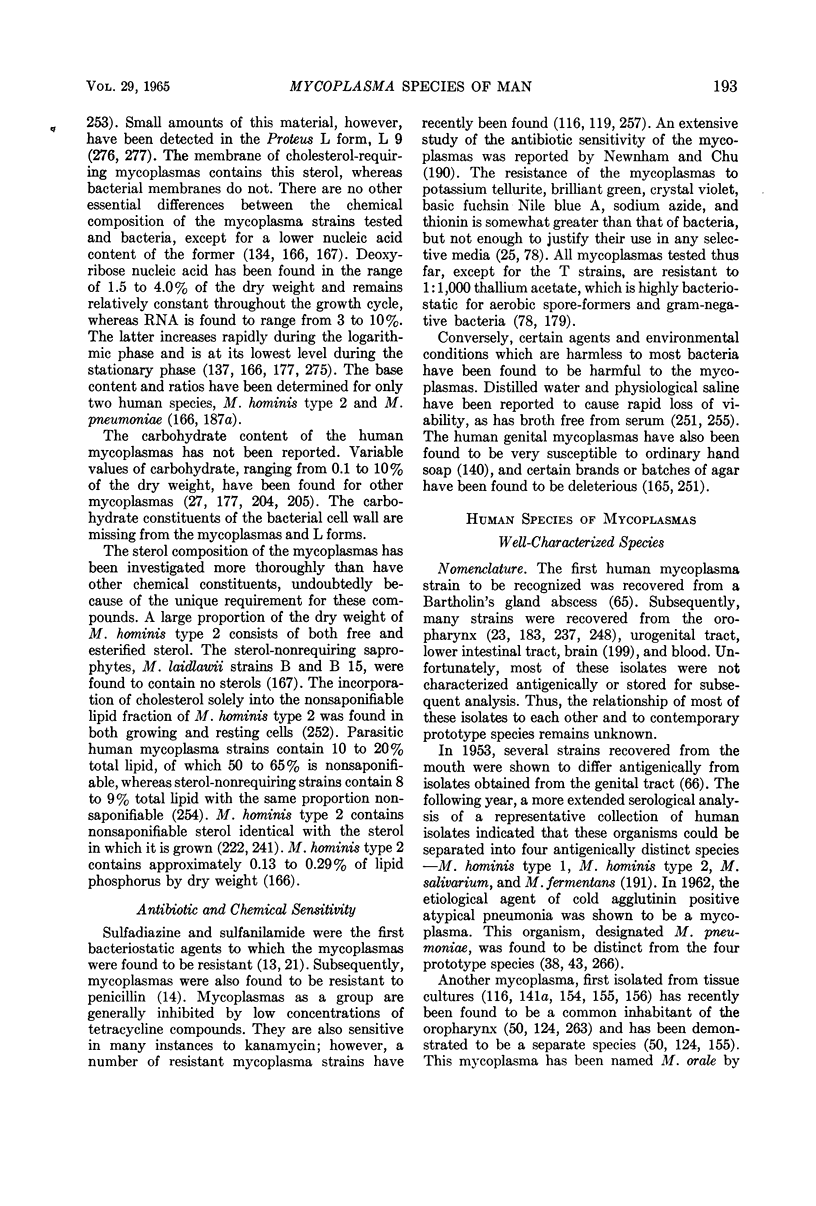
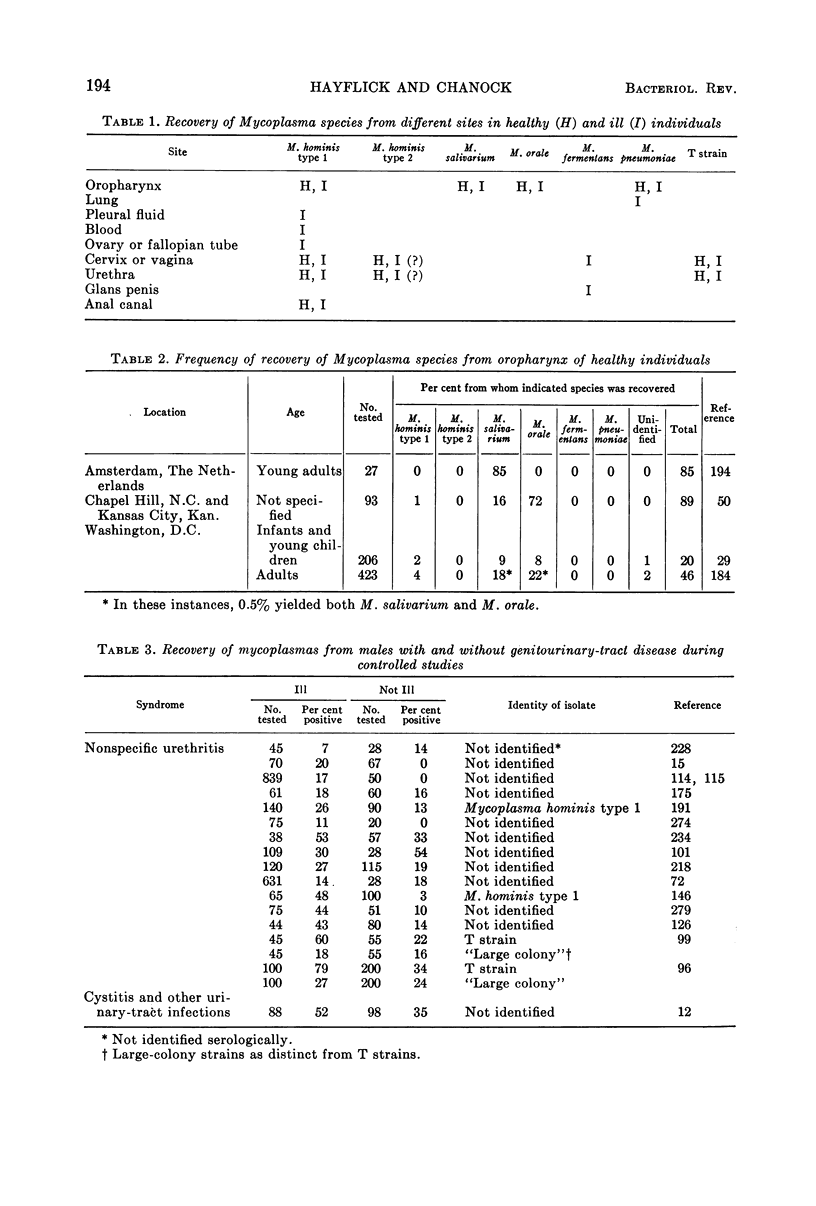
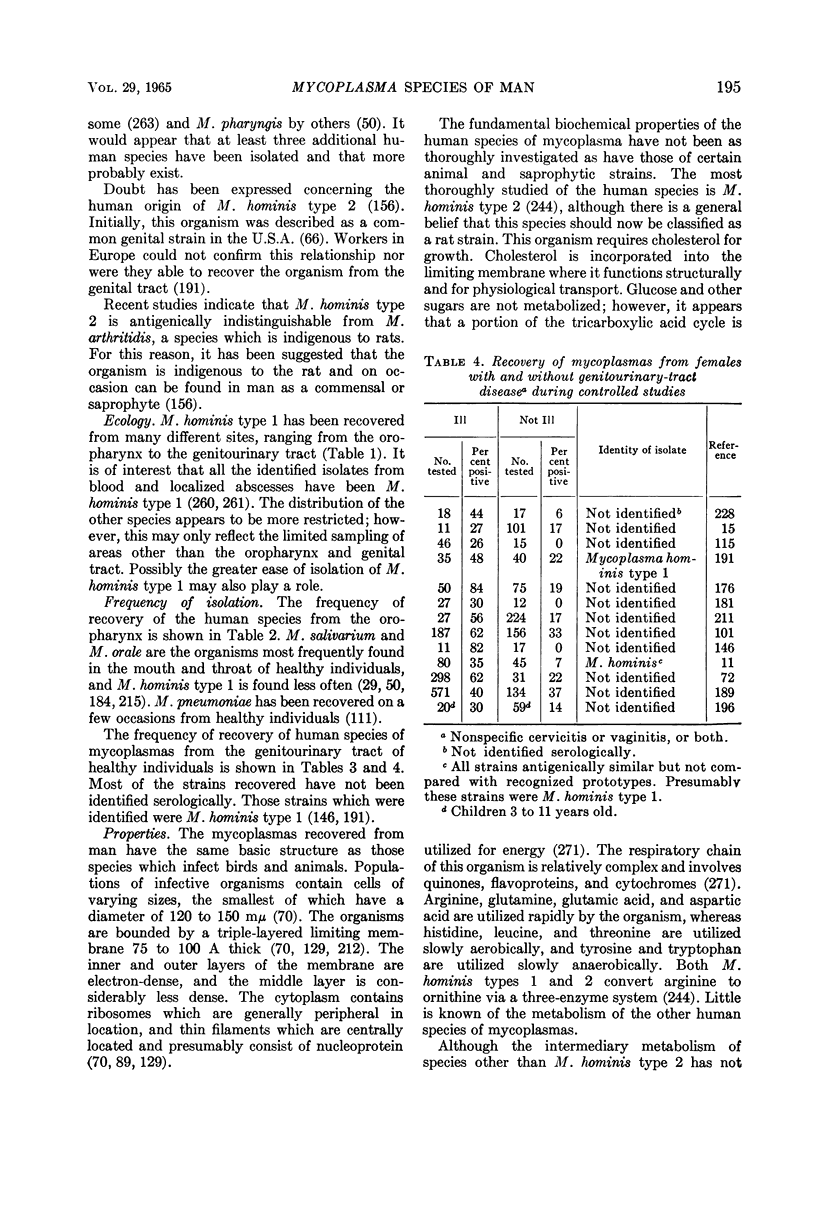
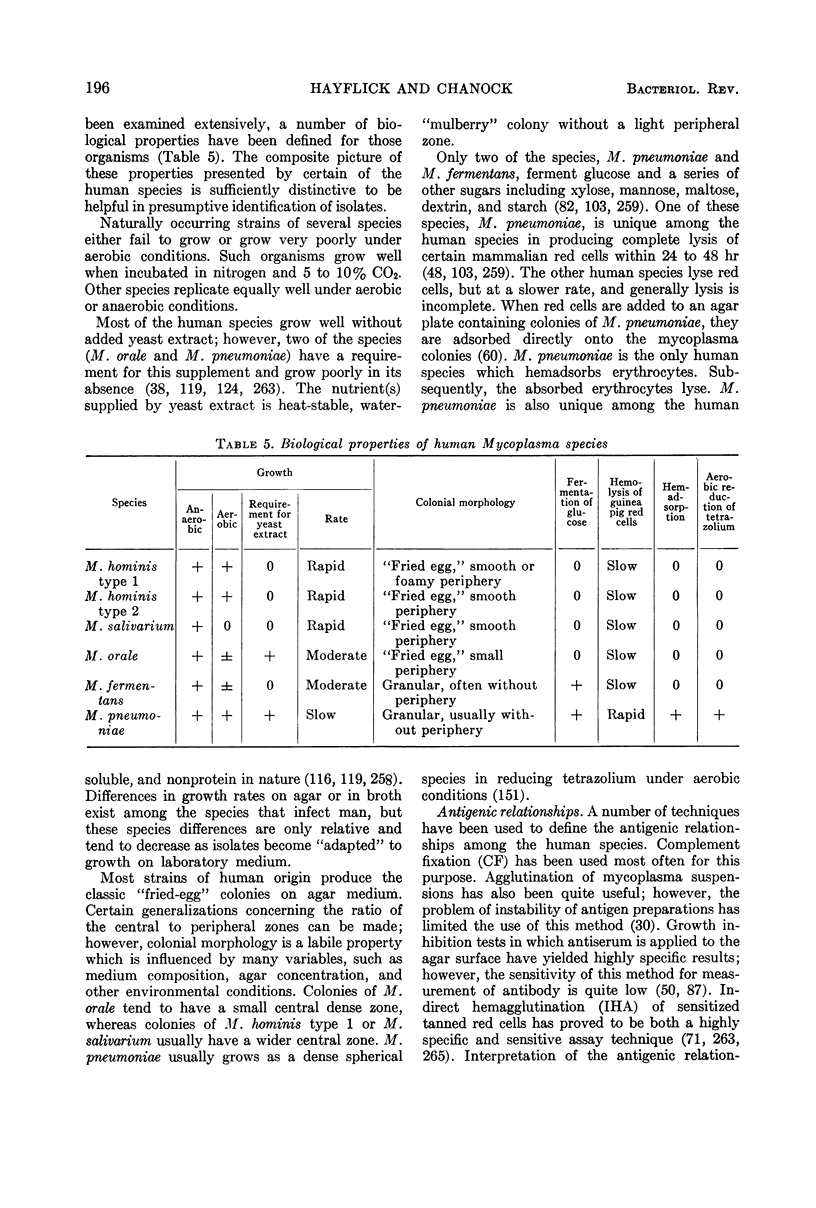
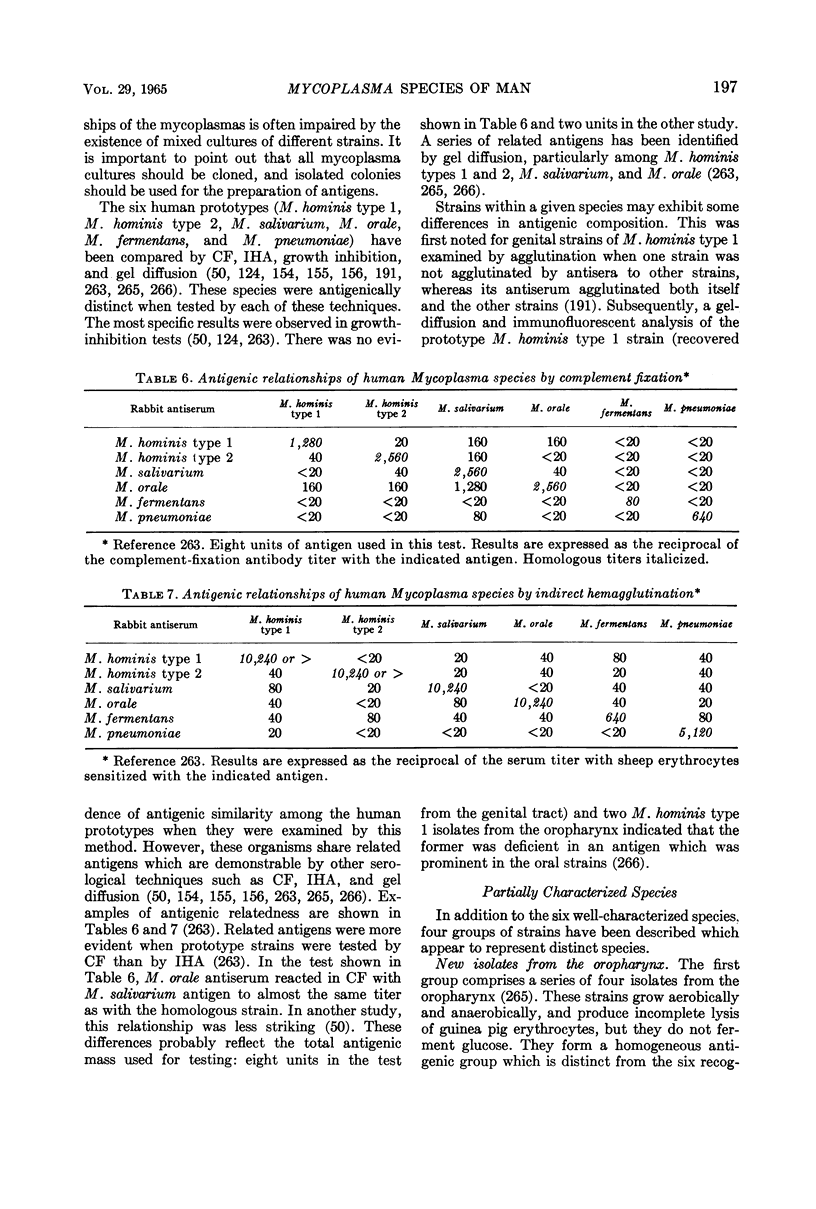
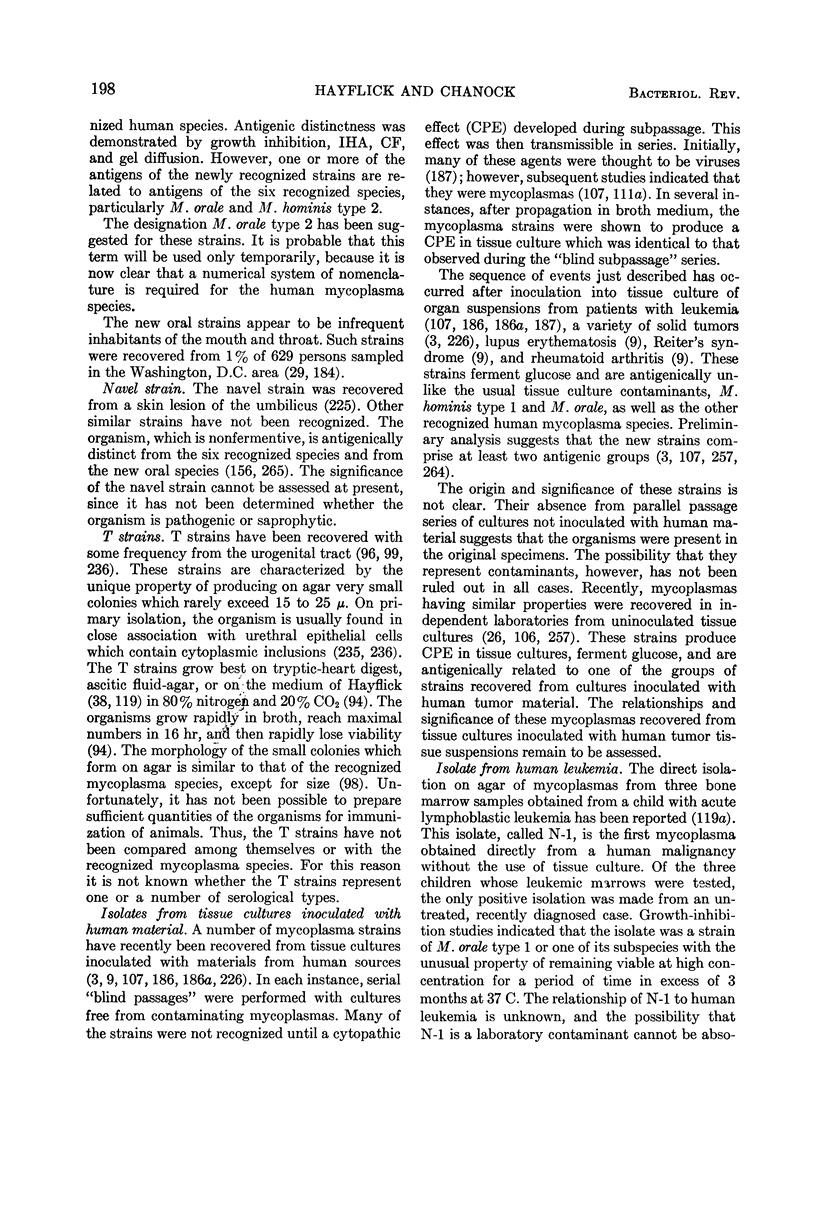
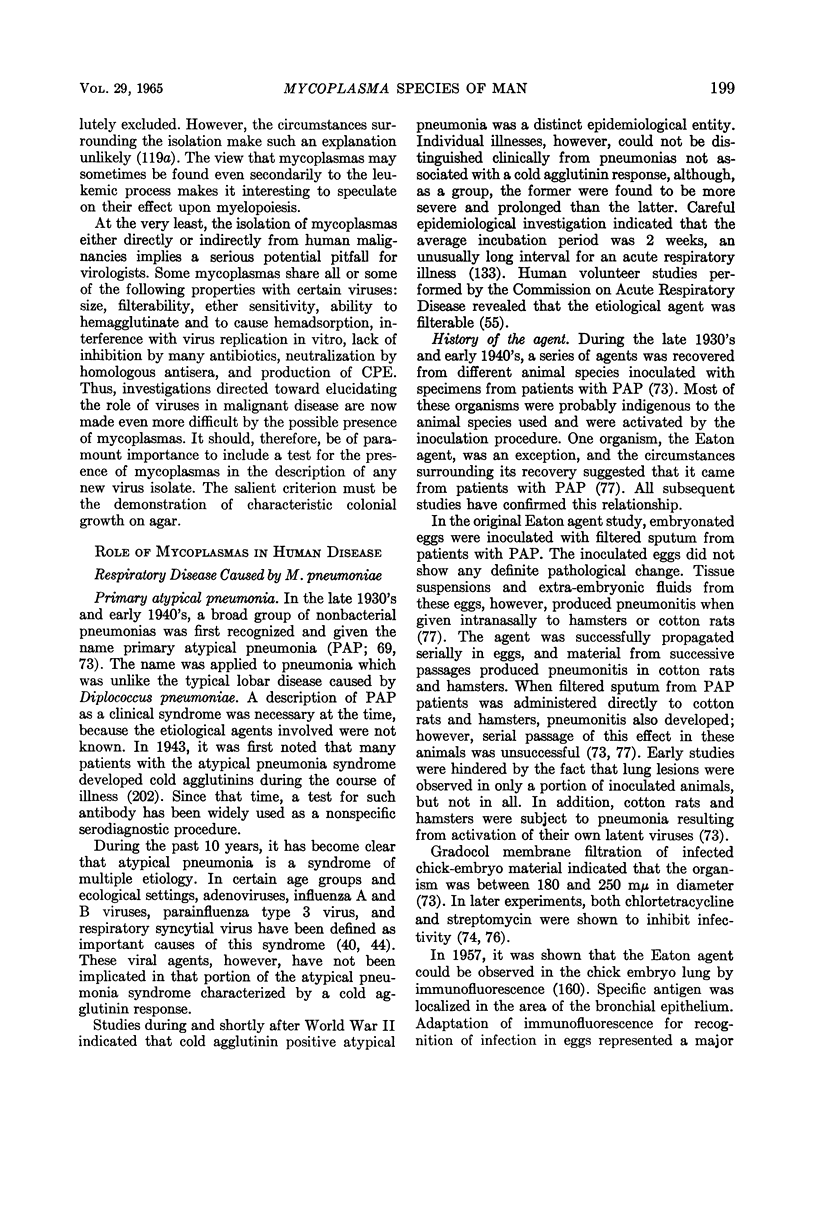
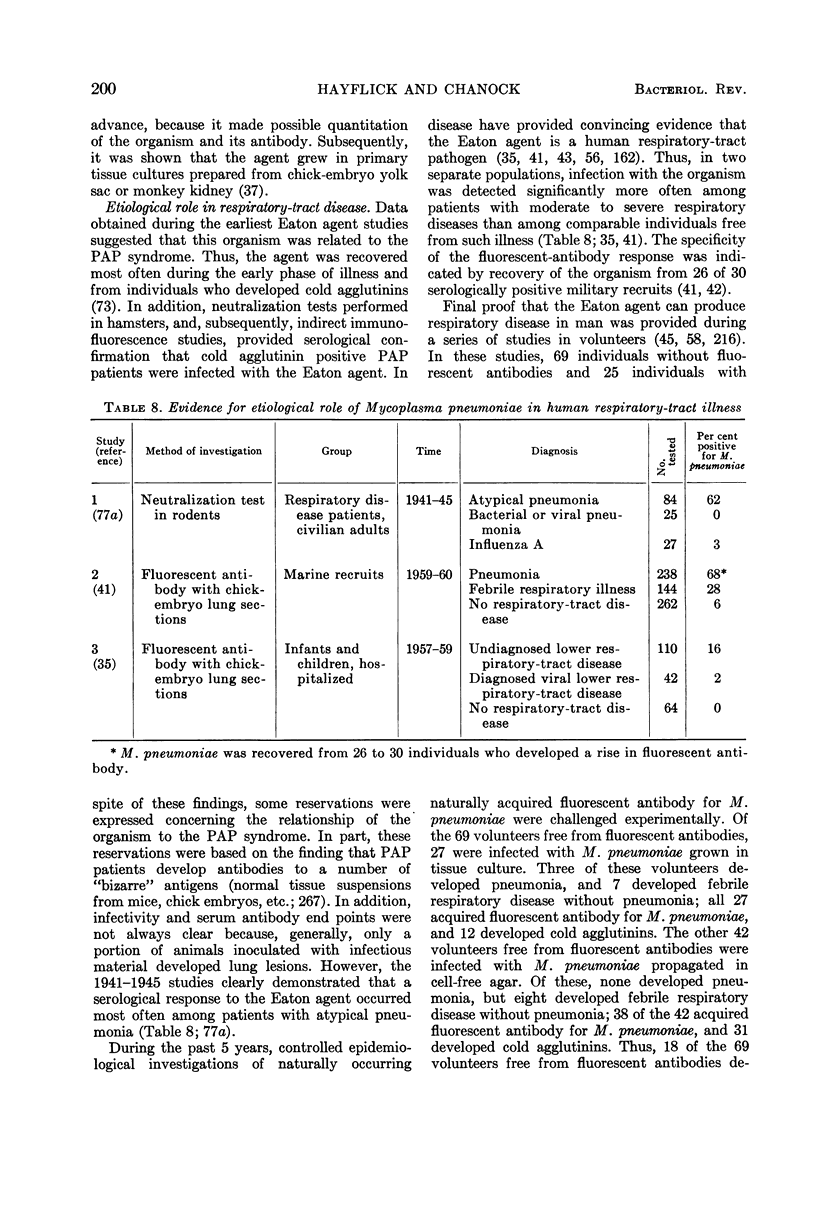
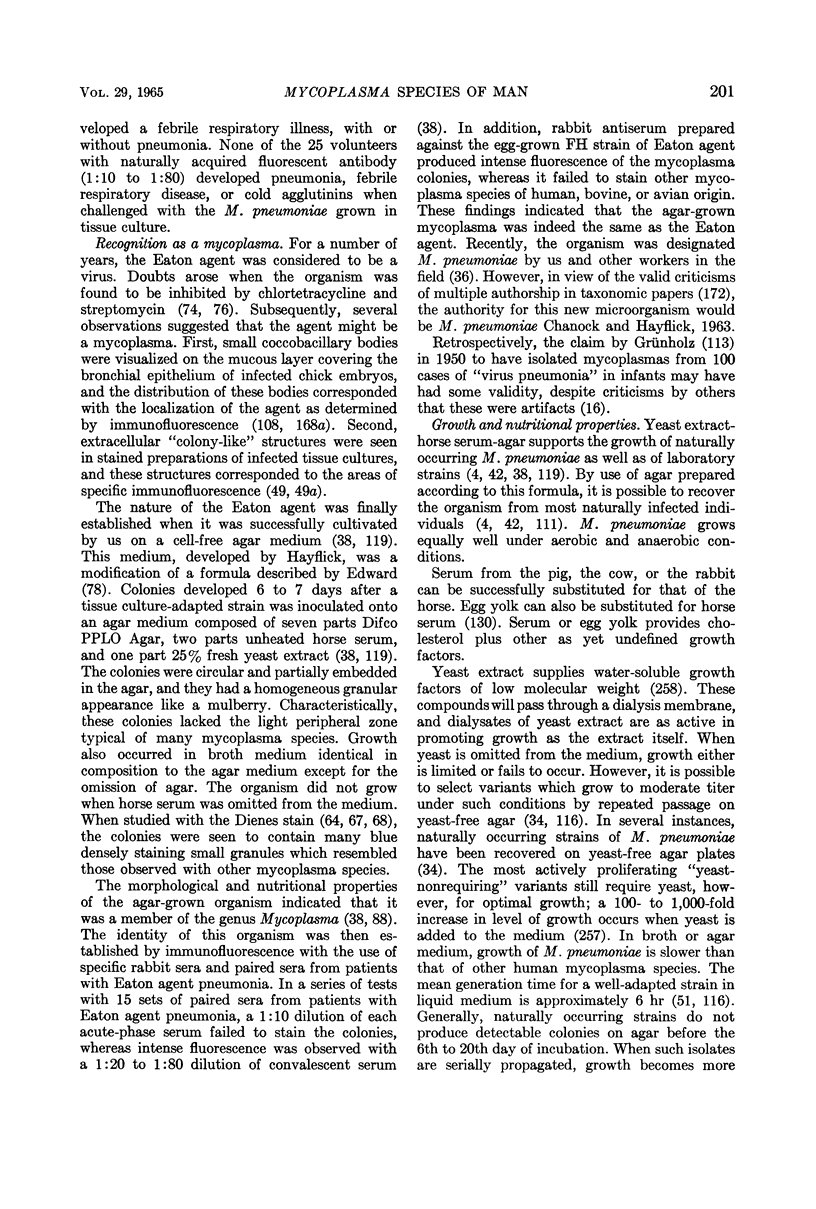
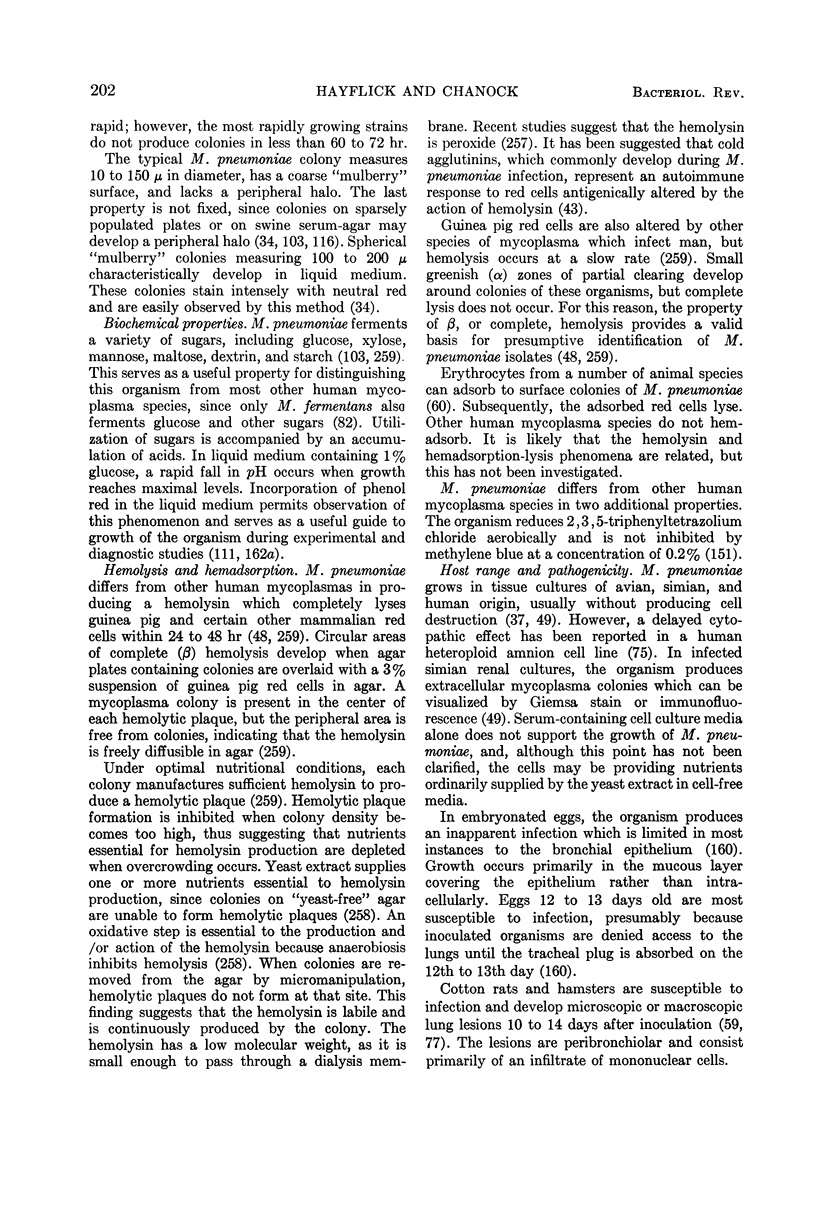
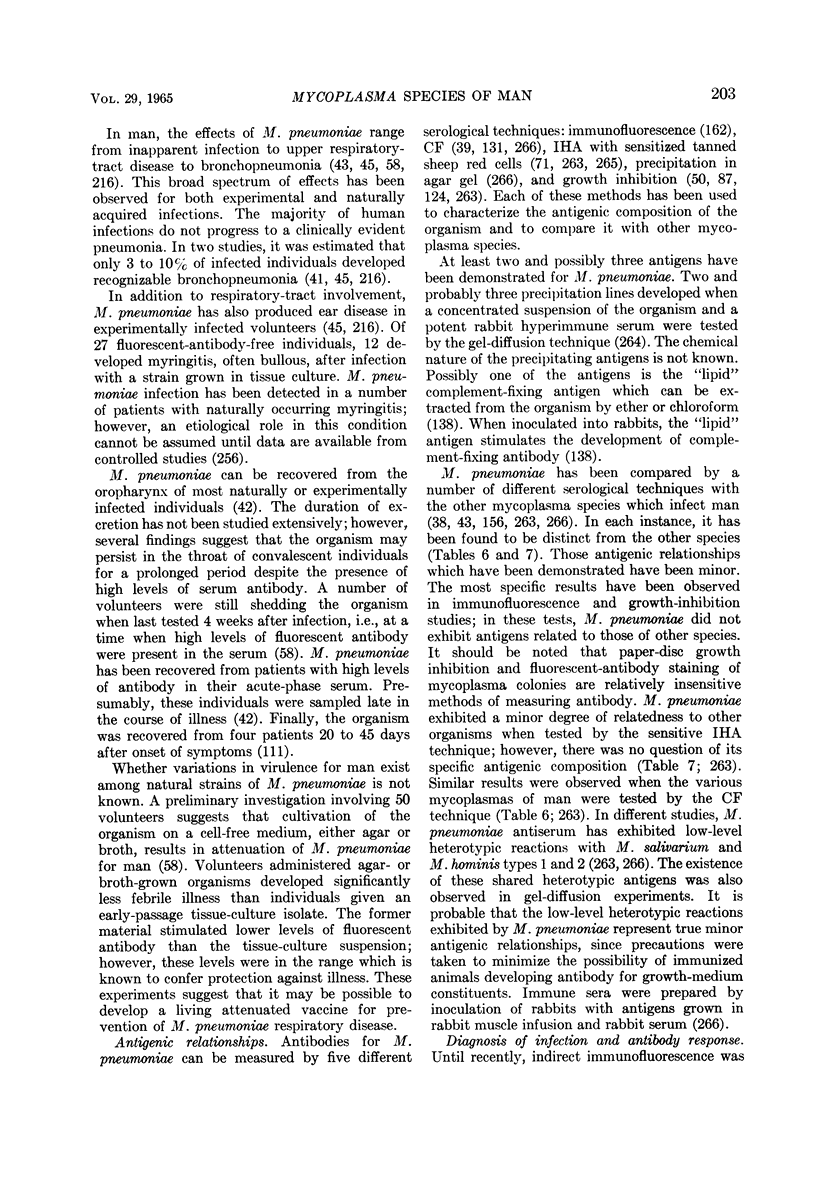
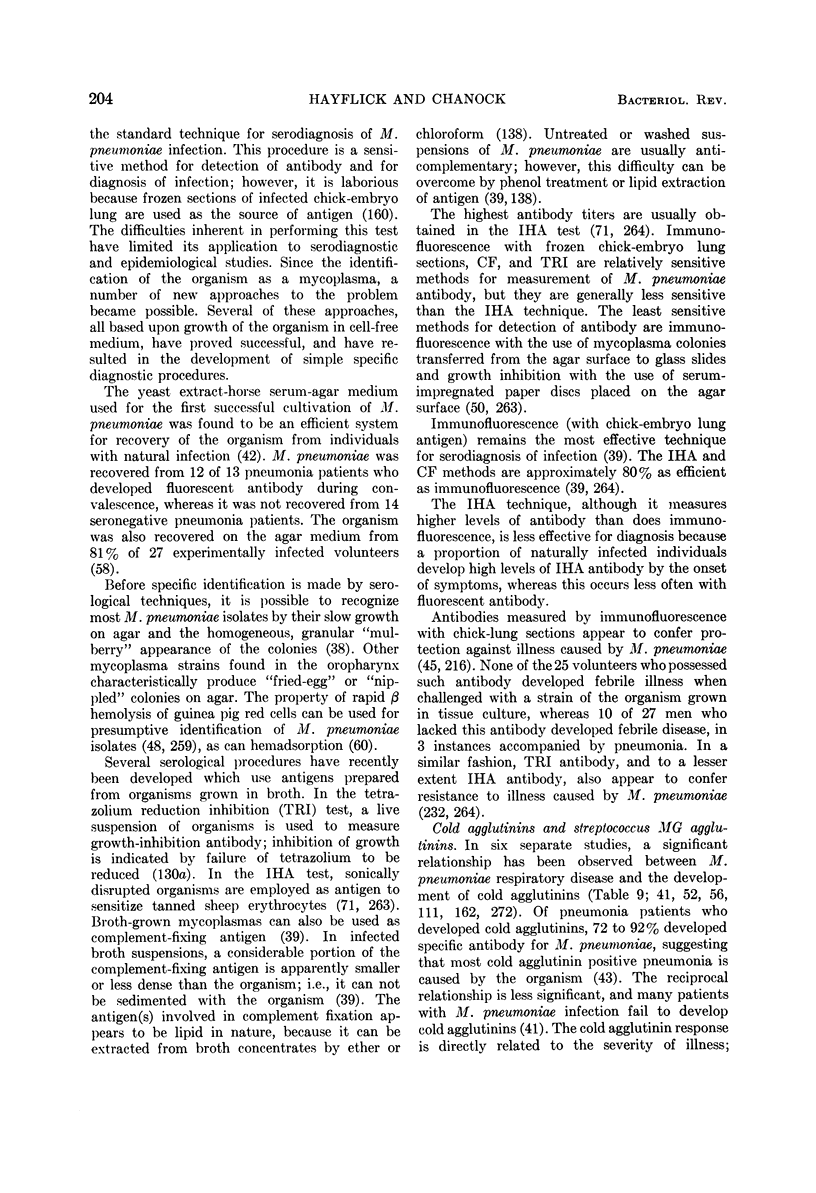
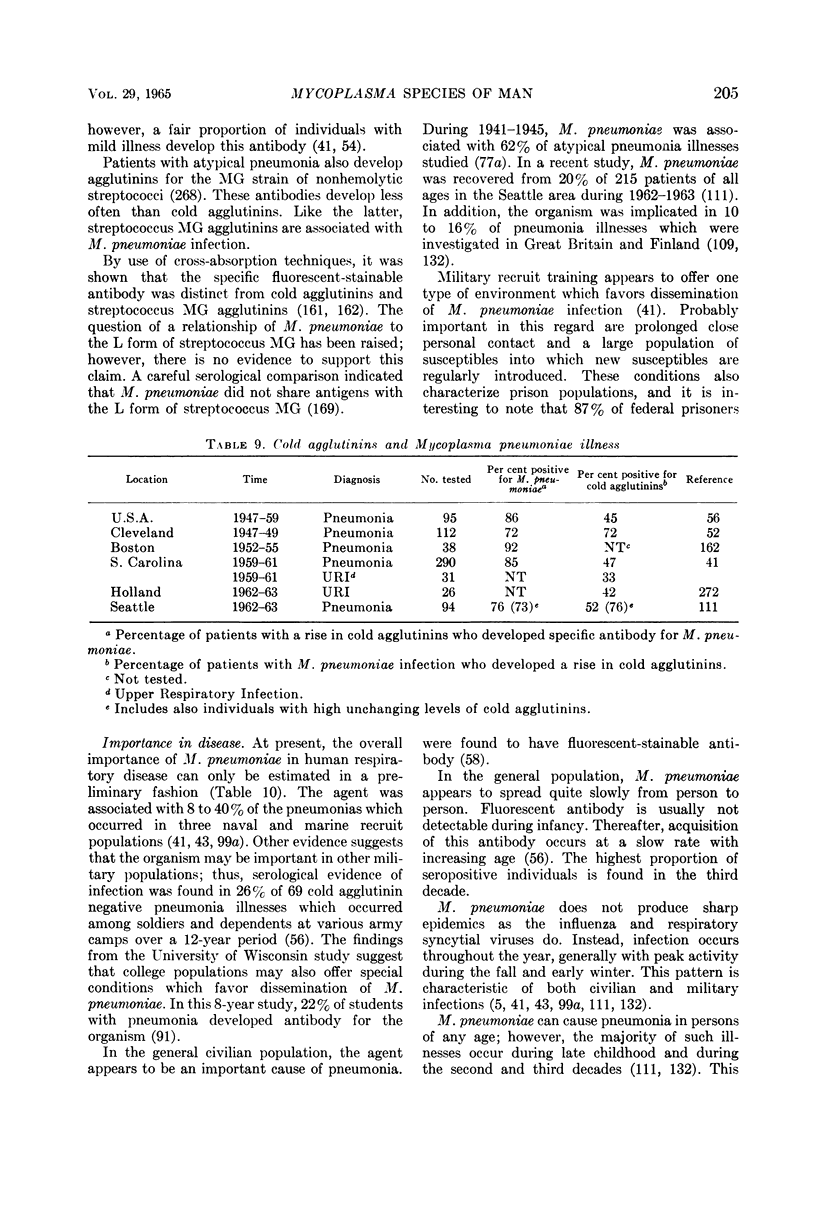
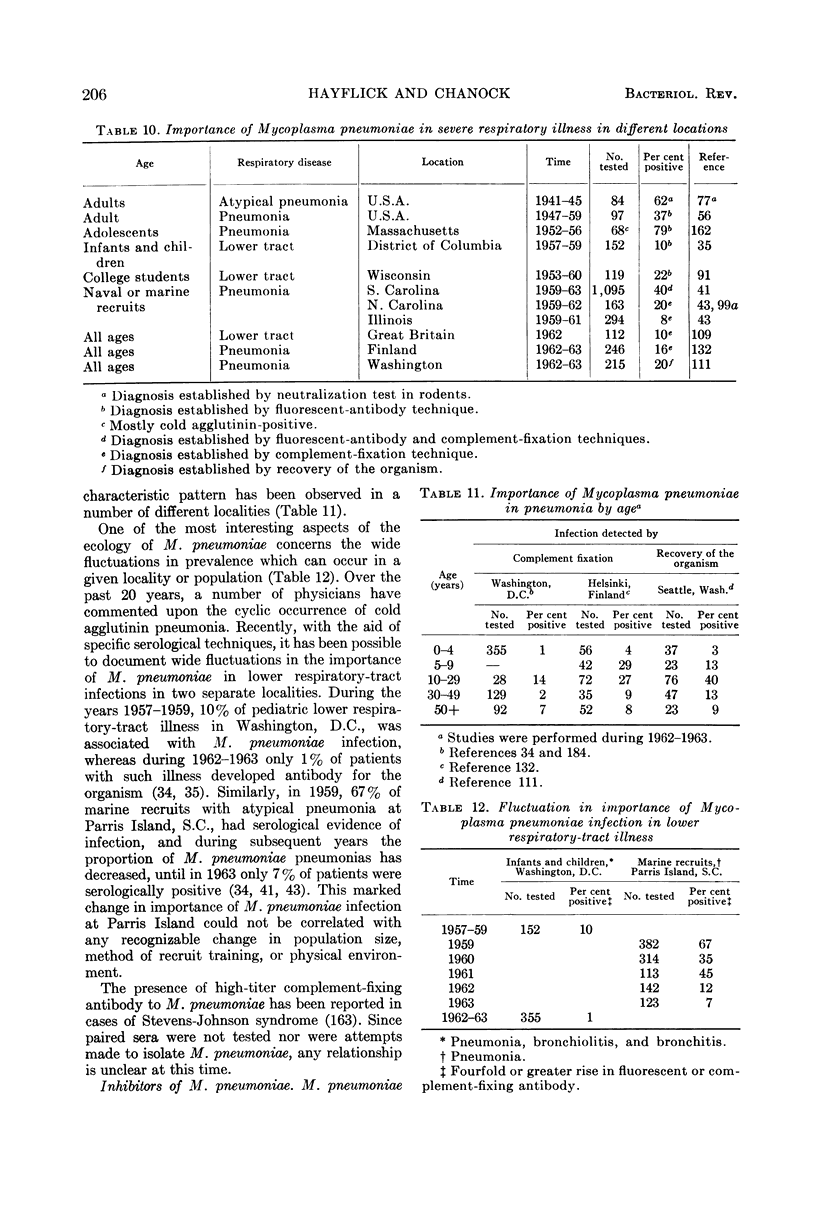
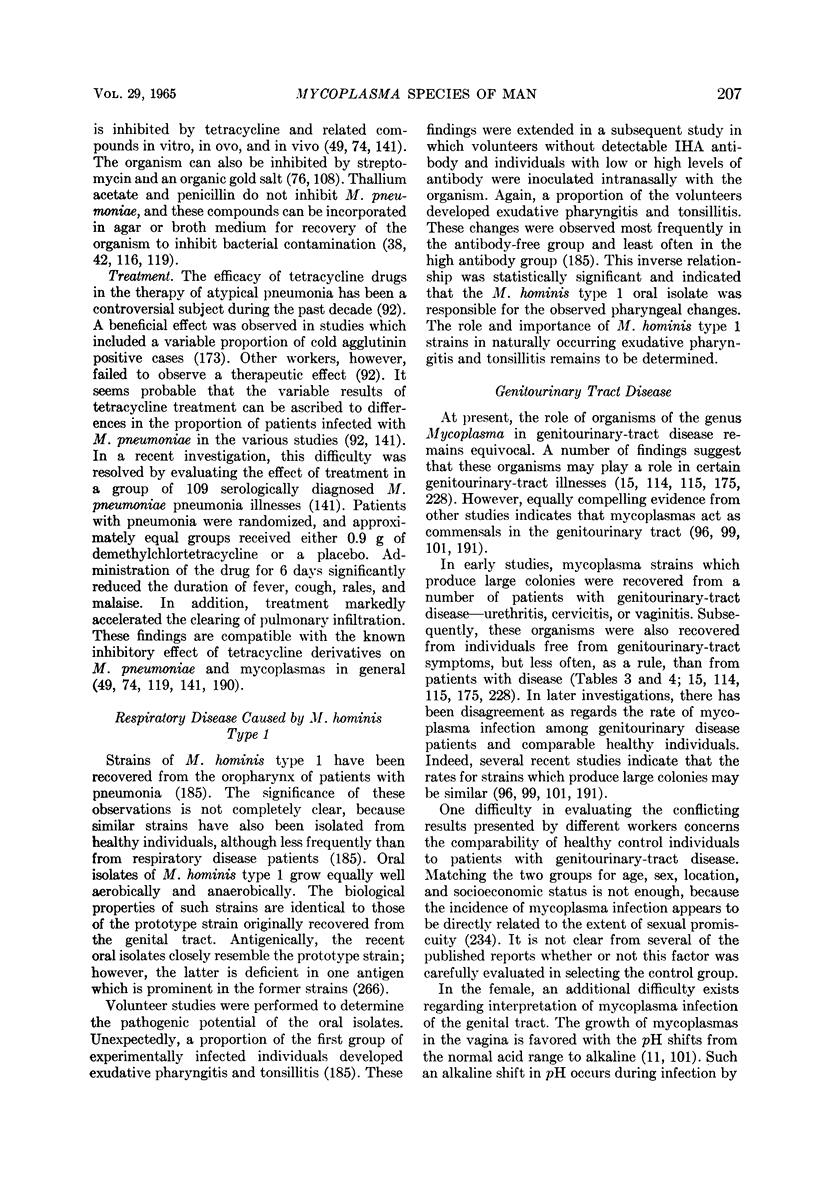
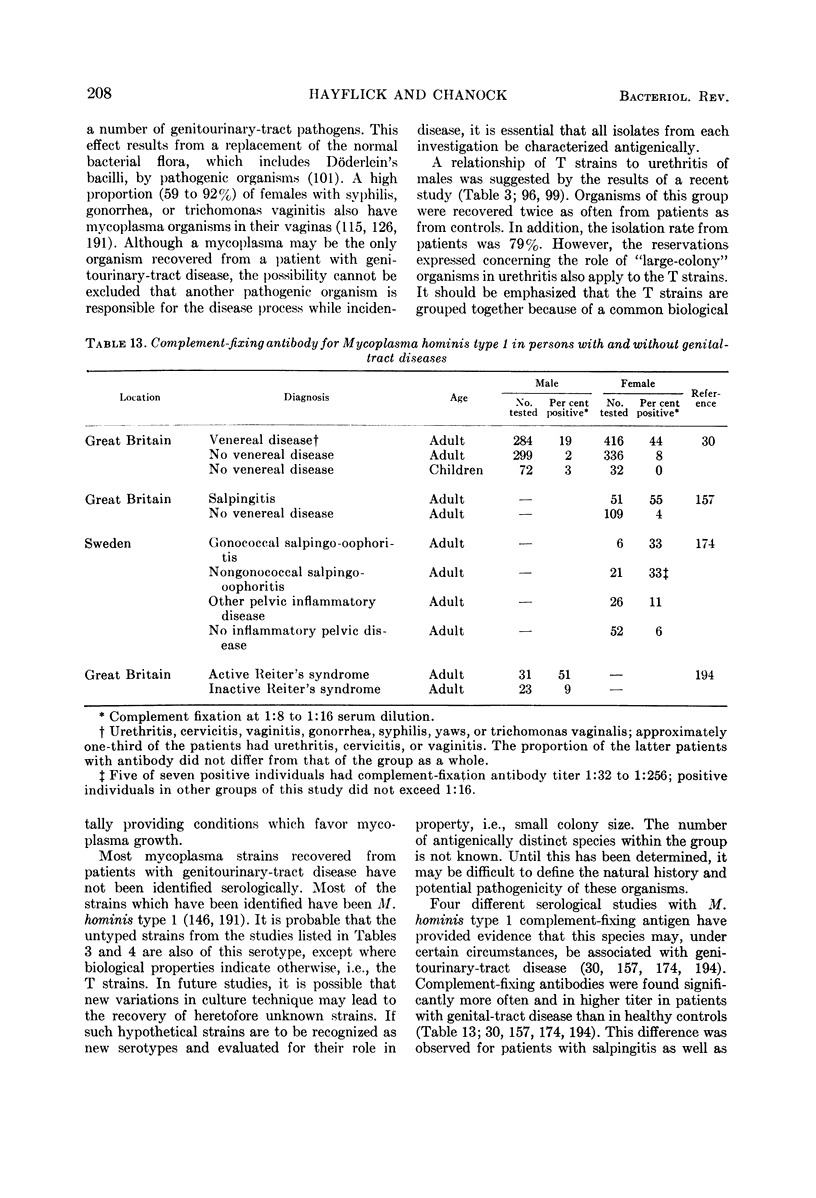
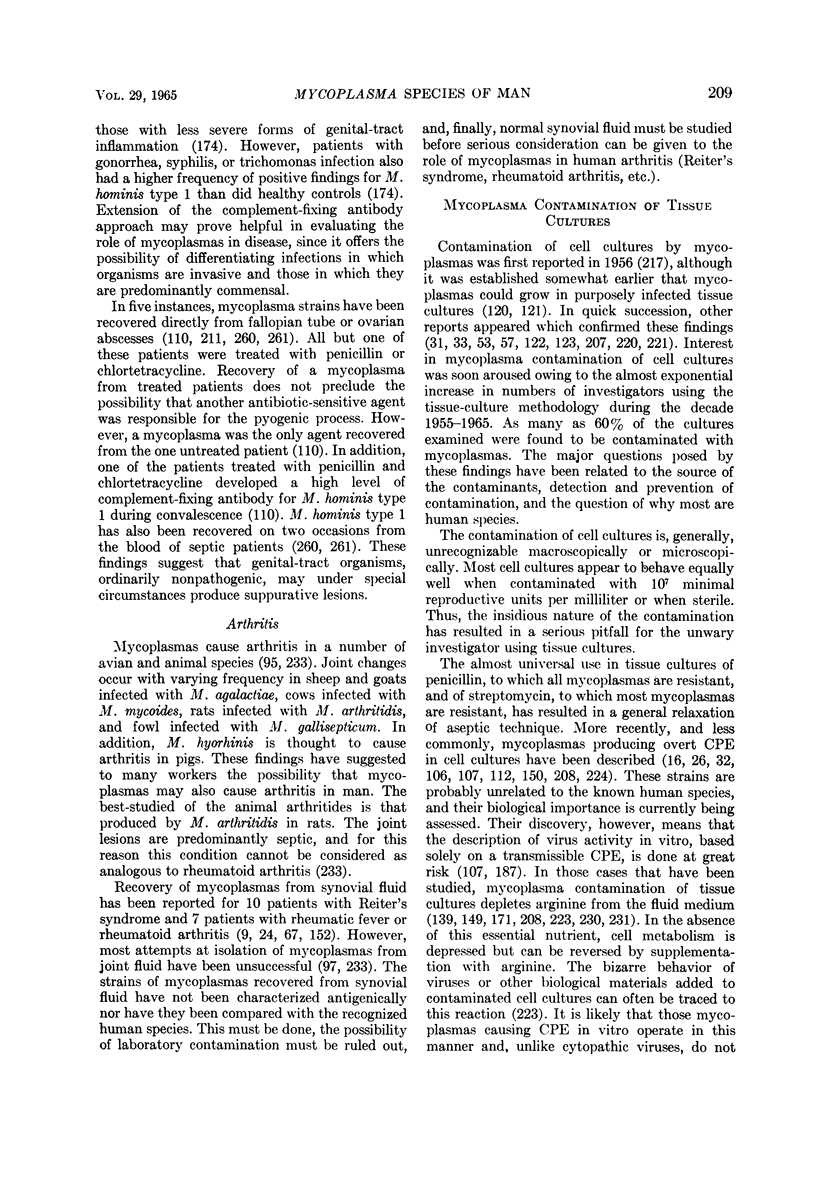
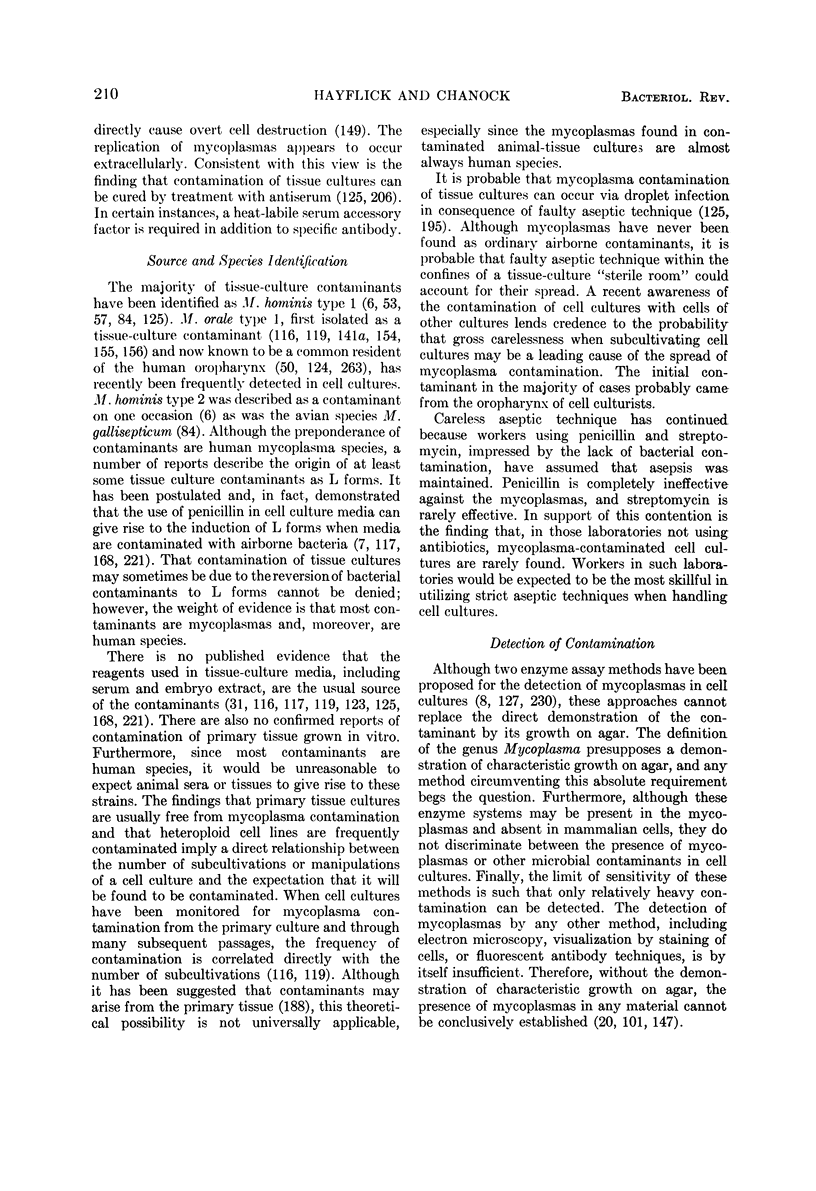
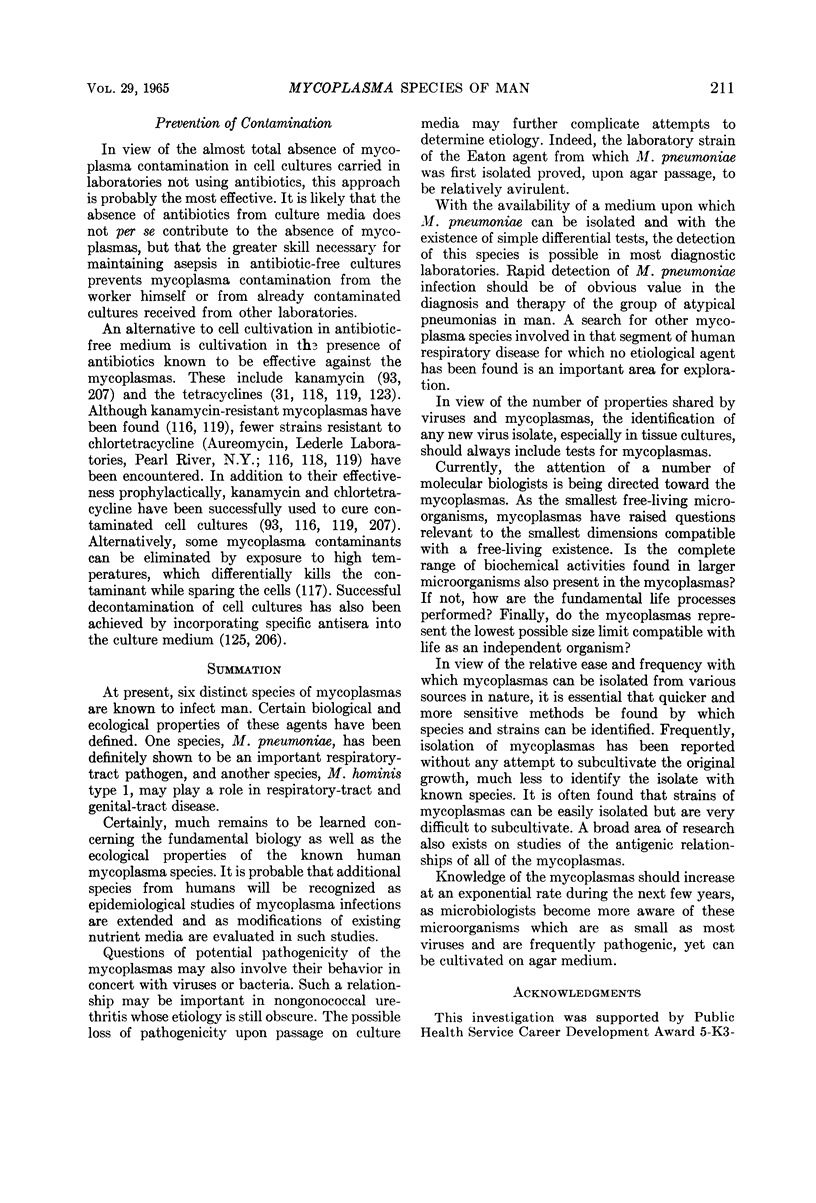
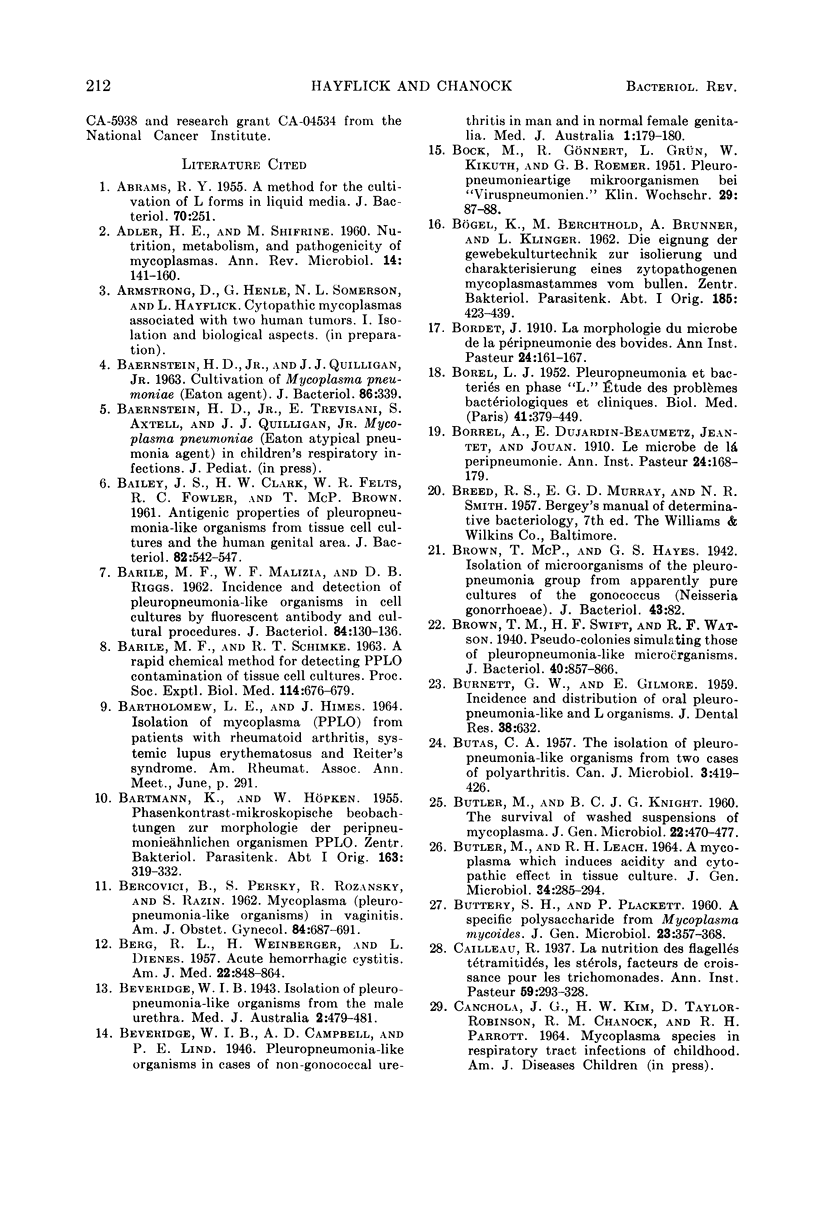
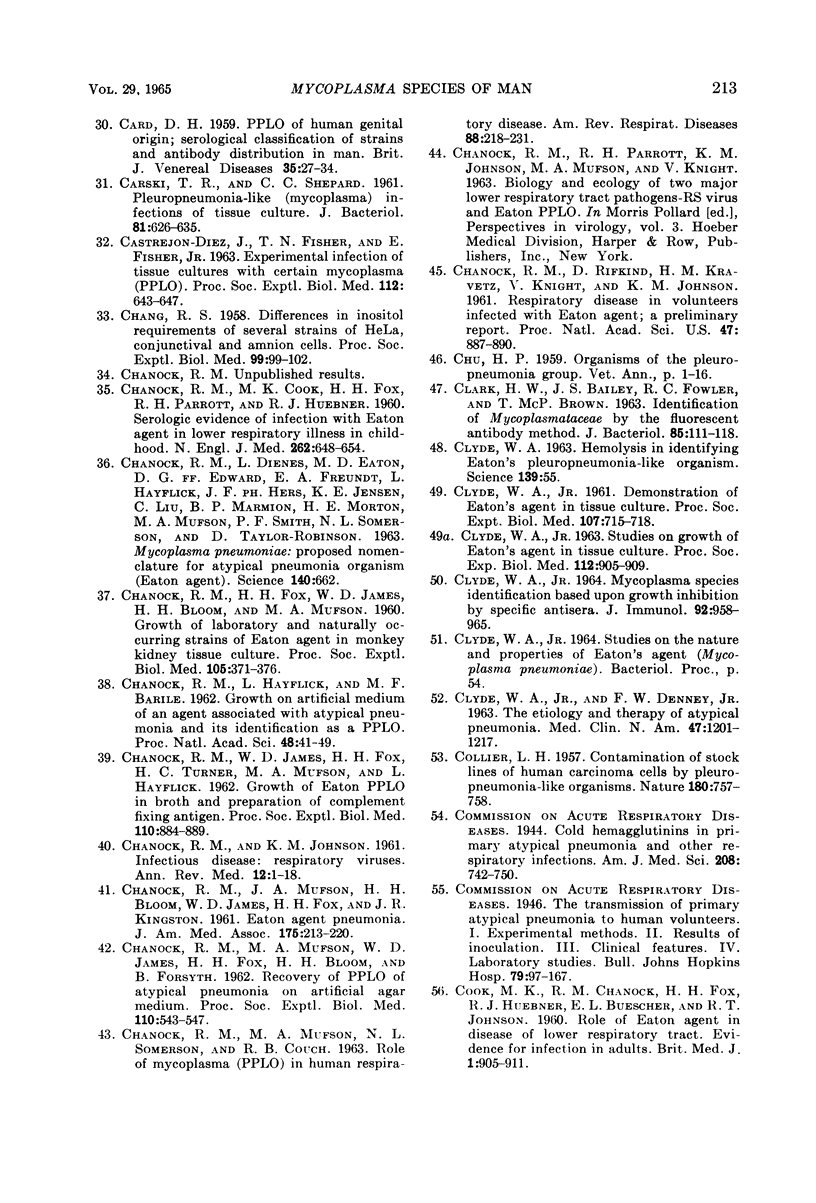
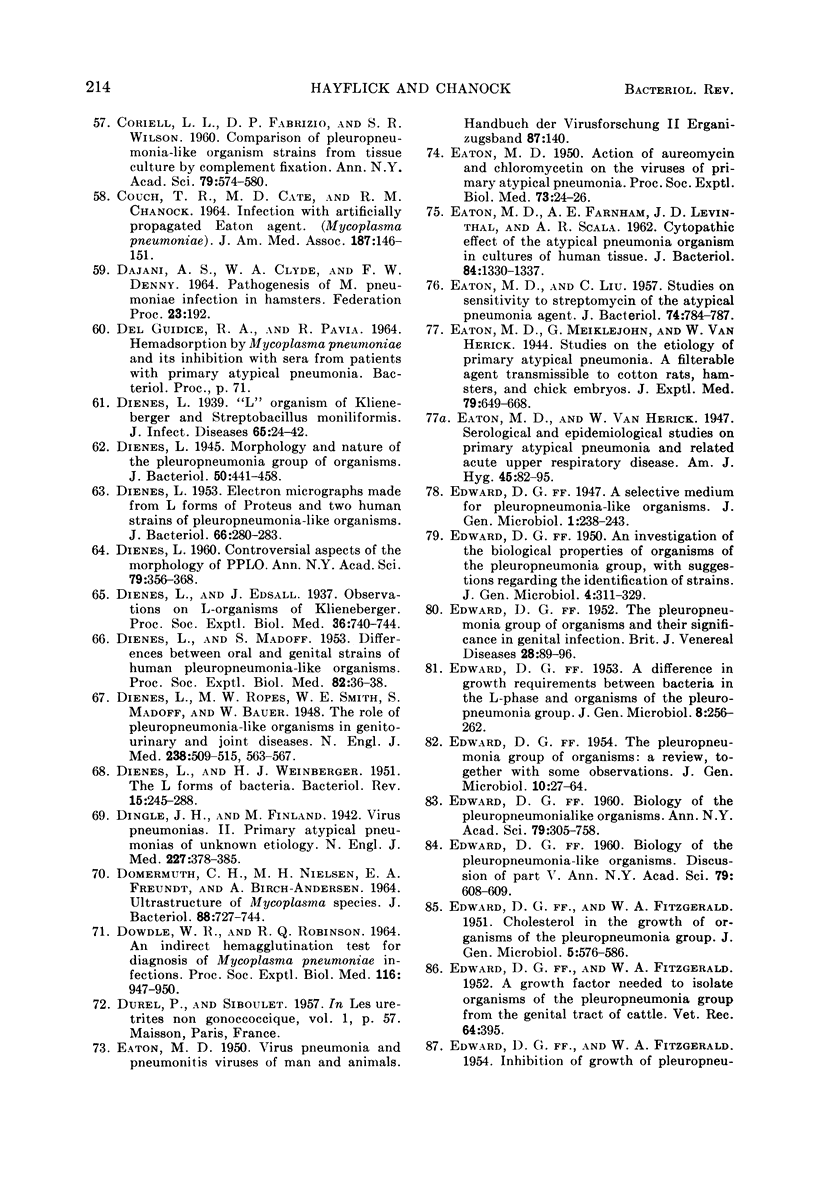
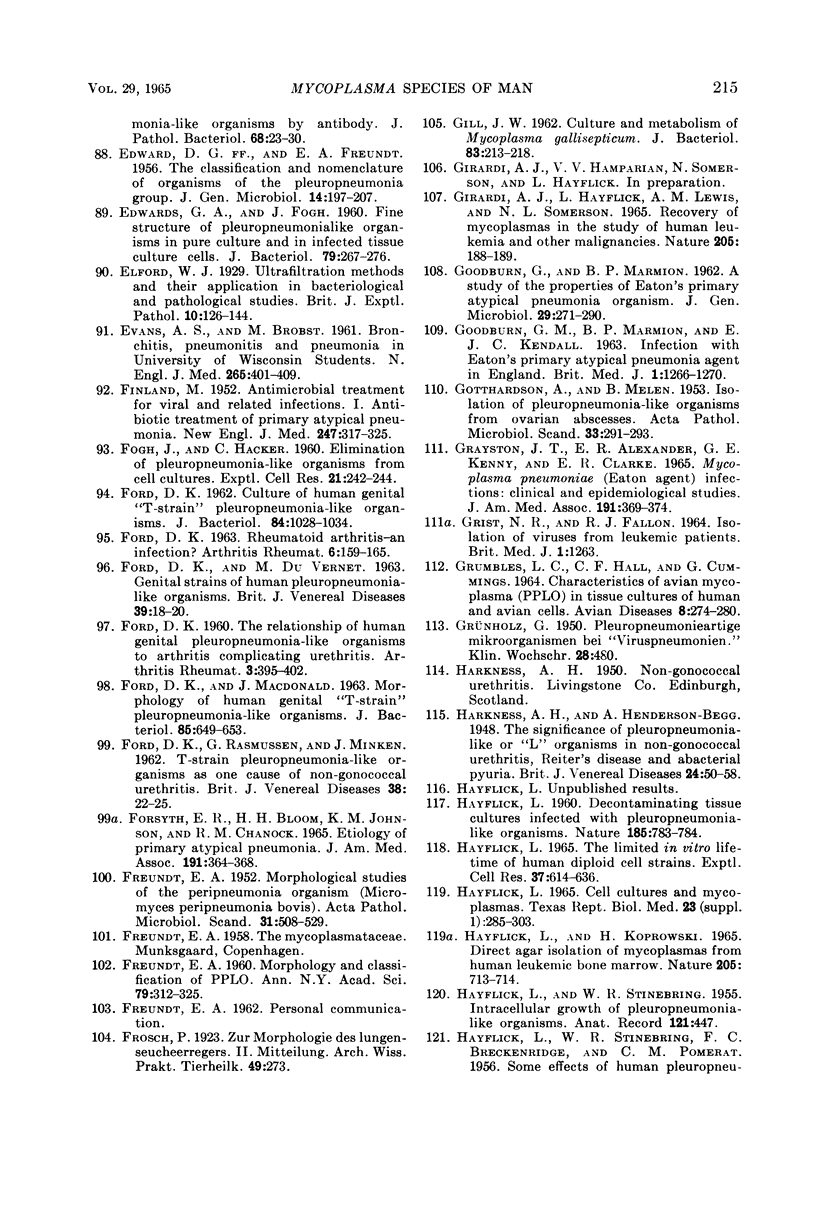
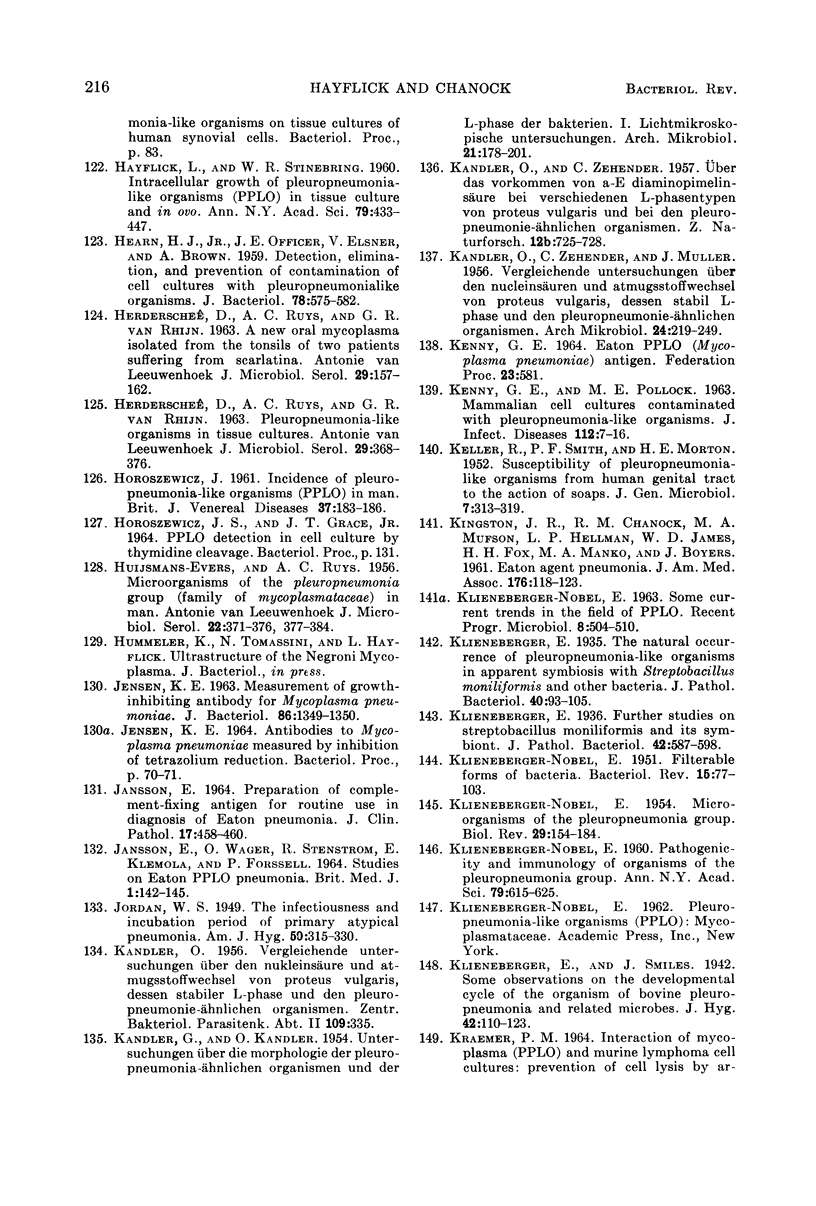
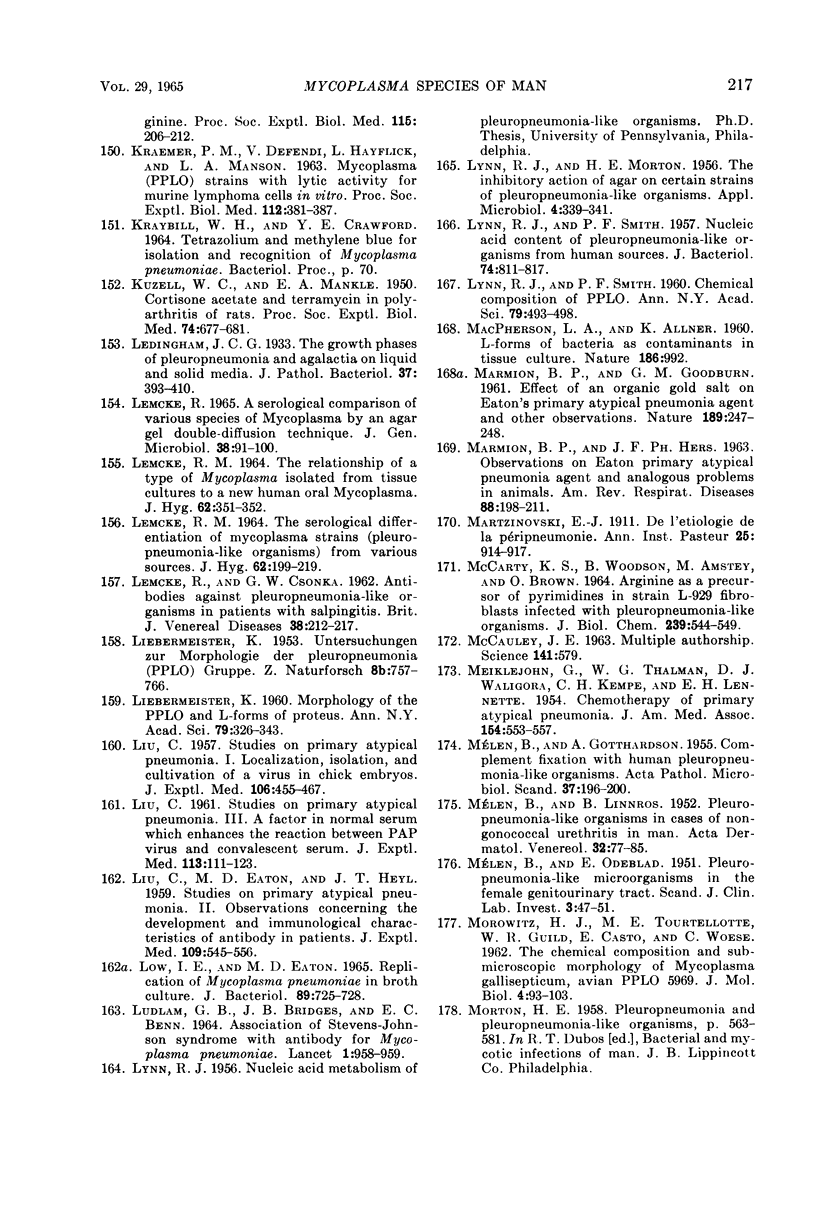
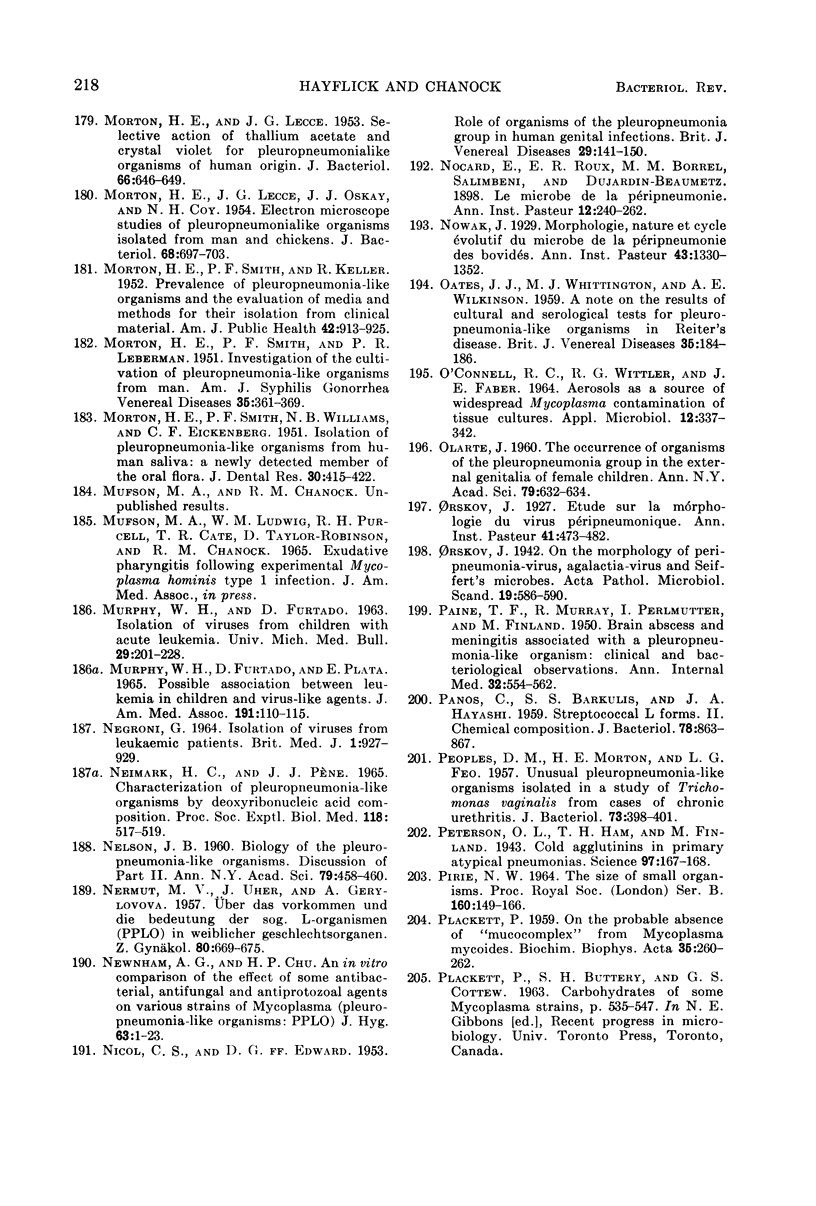
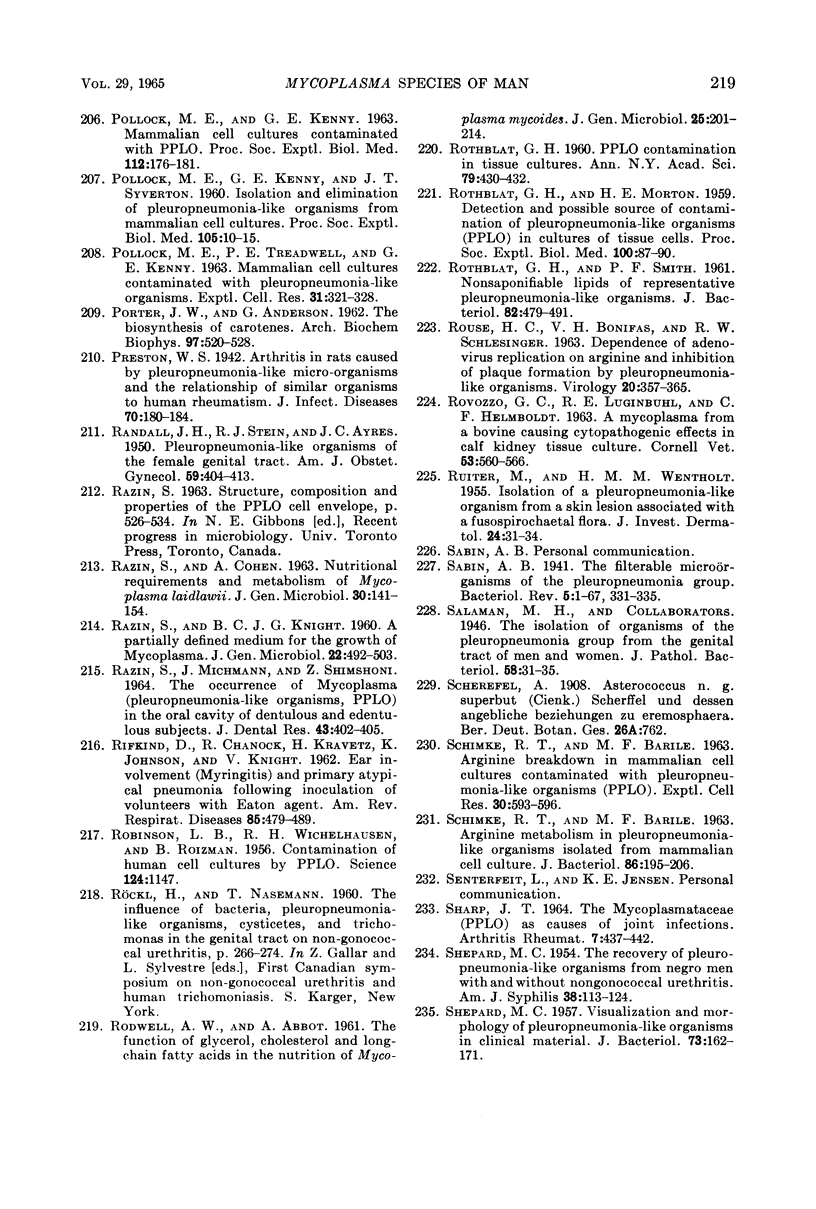
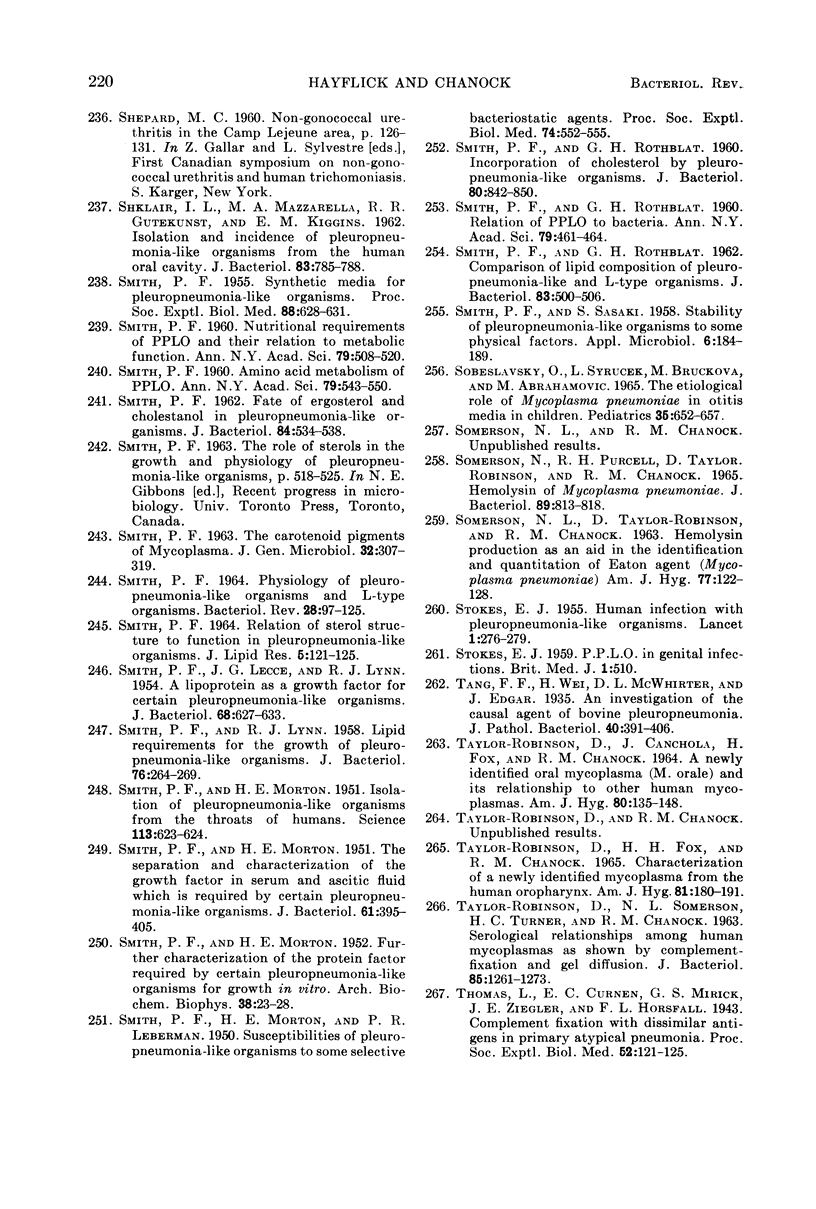
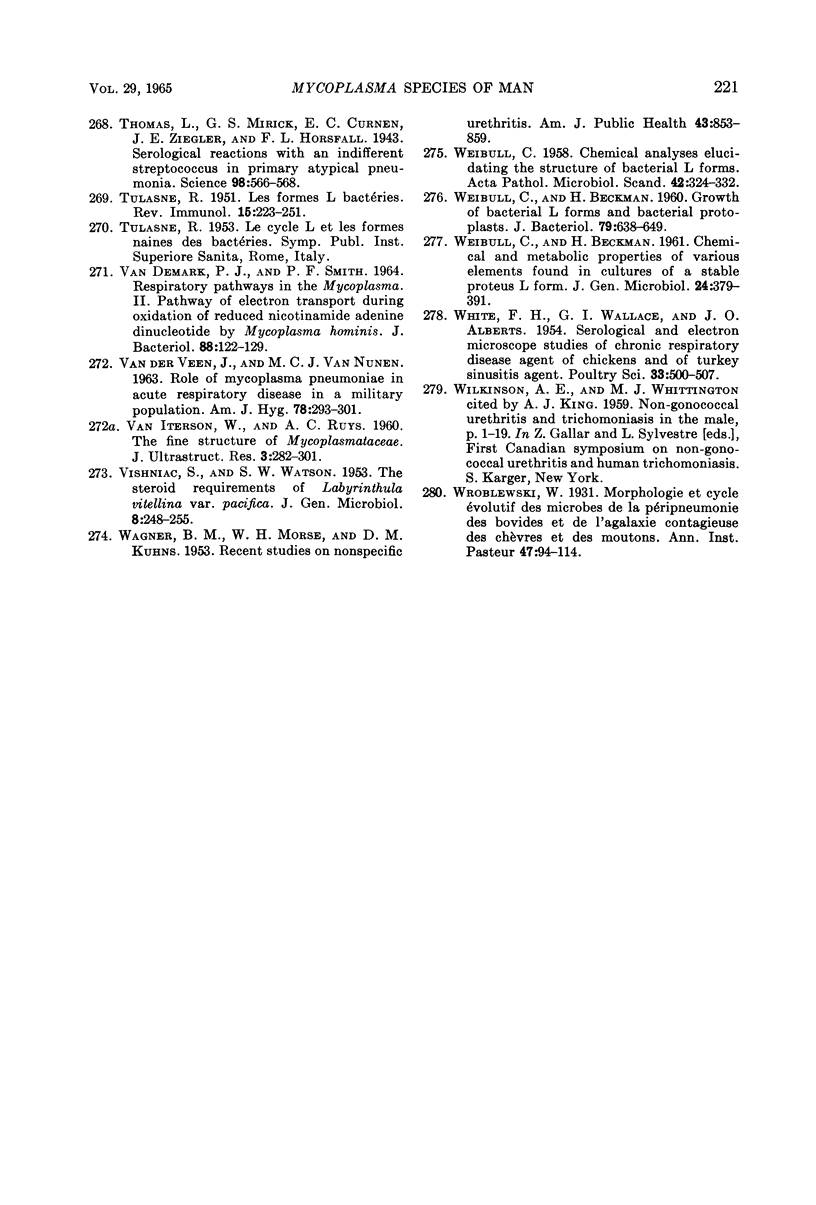
Selected References
These references are in PubMed. This may not be the complete list of references from this article.
- ABRAMS R. Y. A method for the cultivation of L forms in liquid media. J Bacteriol. 1955 Aug;70(2):251–251. doi: 10.1128/jb.70.2.251-251.1955. [DOI] [PMC free article] [PubMed] [Google Scholar]
- ADLER H. E., SHIFRINE M. Nutrition, metabolism, and pathogenicity of Mycoplasmas. Annu Rev Microbiol. 1960;14:141–160. doi: 10.1146/annurev.mi.14.100160.001041. [DOI] [PubMed] [Google Scholar]
- BAERNSTEIN H. D., Jr, QUILLIGAN J. J., Jr CULTIVATION OF MYCOPLASMA PNEUMONIAE (EATON AGENT). J Bacteriol. 1963 Aug;86:339–339. doi: 10.1128/jb.86.2.339-339.1963. [DOI] [PMC free article] [PubMed] [Google Scholar]
- BAILEY J. S., CLARK H. W., FELTS W. R., FOWLER R. C., BROWN T. M. Antigenic properties of pleuropneumonia-like organisms from tissue cell cultures and the human genital area. J Bacteriol. 1961 Oct;82:542–547. doi: 10.1002/path.1700820236. [DOI] [PMC free article] [PubMed] [Google Scholar]
- BARILE M. F., MALIZIA W. F., RIGGS D. B. Incidence and detection of pleuropneumonia-like organisms in cell cultures by fluorescent antibody and cultural procedures. J Bacteriol. 1962 Jul;84:130–136. doi: 10.1128/jb.84.1.130-136.1962. [DOI] [PMC free article] [PubMed] [Google Scholar]
- BARTMANN K., HOPKEN W. Phasenkontrastmikroskopische Beobachtungen zur Morphologie der peripneumonieähnlichen Organismen (PPLO). Zentralbl Bakteriol Orig. 1955 Aug;163(5-6):319–332. [PubMed] [Google Scholar]
- BERCOVICI B., PERSKY S., ROZANSKY R., RAZIN S. Mycoplasma (pleuropneumonia-like organisms) in vaginitis. Am J Obstet Gynecol. 1962 Sep 1;84:687–691. doi: 10.1016/0002-9378(62)90165-5. [DOI] [PubMed] [Google Scholar]
- BERG R. L., WEINBERGER H., DIENES L. Acute hemorrhagic cystitis; an infection associated with pleuropneumonia-like organisms and related to urethritis and prostatitis. Am J Med. 1957 Jun;22(6):848–864. doi: 10.1016/0002-9343(57)90021-9. [DOI] [PubMed] [Google Scholar]
- BOCK M., GONNERT R., GRUN L., KIKUTH W., ROEMER G. B. Pleuropneumonieartige Mikroorganismen bei Viruspneumonien? Eine Stellungnahme zu der gleichnamigen Veroffentilichung von Gerhard Grunholz. Klin Wochenschr. 1951 Feb 1;29(5-6):87–88. doi: 10.1007/BF01480498. [DOI] [PubMed] [Google Scholar]
- BOREL L. J. Pleuropneumonia et bactéries en phase L; étude des problèmes bacteriologiques et cliniques. Biol Med (Paris) 1952 Jun-Jul;41(4):379–449. [PubMed] [Google Scholar]
- BURNETT G. W., GILMORE E. Incidence and distribution of oral pleuropneumonialike and L organisms. J Dent Res. 1959 May-Jun;38(3):632–632. doi: 10.1177/00220345590380032901. [DOI] [PubMed] [Google Scholar]
- BUTAS C. A. The isolation of pleuropneumonia-like organisms from two cases of polyarthritis. Can J Microbiol. 1957 Apr;3(3):419–426. doi: 10.1139/m57-044. [DOI] [PubMed] [Google Scholar]
- BUTLER M., KNIGHT B. C. The survival of washed suspensions of Mycoplasma. J Gen Microbiol. 1960 Apr;22:470–477. doi: 10.1099/00221287-22-2-470. [DOI] [PubMed] [Google Scholar]
- BUTLER M., LEACH R. H. A MYCOPLASMA WHICH INDUCES ACIDITY AND CYTOPATHIC EFFECT IN TISSUE CULTURE. J Gen Microbiol. 1964 Feb;34:285–294. doi: 10.1099/00221287-34-2-285. [DOI] [PubMed] [Google Scholar]
- BUTTERY S. H., PLACKETT P. A specific polysaccharide from Mycoplasma mycoides. J Gen Microbiol. 1960 Oct;23:357–368. doi: 10.1099/00221287-23-2-357. [DOI] [PubMed] [Google Scholar]
- Brown T. M., Swift H. F., Watson R. F. Pseudo-Colonies Simulating Those of Pleuropneumonia-Like Microorganisms. J Bacteriol. 1940 Dec;40(6):857–867. doi: 10.1128/jb.40.6.857-867.1940. [DOI] [PMC free article] [PubMed] [Google Scholar]
- CARD D. H. PPLO of human genital origin; serological classification of strains and antibody distribution in man. Br J Vener Dis. 1959 Mar;35(1):27–34. doi: 10.1136/sti.35.1.27. [DOI] [PMC free article] [PubMed] [Google Scholar]
- CARSKI T. R., SHEPARD C. C. Pleuropneumonia-like (mycoplasma) infections of tissue culture. J Bacteriol. 1961 Apr;81:626–635. doi: 10.1128/jb.81.4.626-635.1961. [DOI] [PMC free article] [PubMed] [Google Scholar]
- CASTREJON-DIEZ J., FISHER T. N., FISHER E., Jr Experimental infection of tissue cultures with certain mycoplasma (PPLO). Proc Soc Exp Biol Med. 1963 Mar;112:643–647. doi: 10.3181/00379727-112-28127. [DOI] [PubMed] [Google Scholar]
- CHANG R. S. Differences in inositol requirements of several strains of HeLa, conjunctival and amnion cells. Proc Soc Exp Biol Med. 1958 Oct;99(1):99–102. doi: 10.3181/00379727-99-24260. [DOI] [PubMed] [Google Scholar]
- CHANOCK R. M., COOK M. K., FOX H. H., PARROTT R. H., HUEBNER R. J. Serologic evidence of infection with Eaton agent in lower respiratory illness in childhood. N Engl J Med. 1960 Mar 31;262:648–654. doi: 10.1056/NEJM196003312621303. [DOI] [PubMed] [Google Scholar]
- CHANOCK R. M., FOX H. H., JAMES W. D., BLOOM H. H., MUFSON M. A. Growth of laboratory and naturally occurring strains of Eaton agent in monkey kidney tissue culture. Proc Soc Exp Biol Med. 1960 Nov;105:371–375. doi: 10.3181/00379727-105-26114. [DOI] [PubMed] [Google Scholar]
- CHANOCK R. M., HAYFLICK L., BARILE M. F. Growth on artificial medium of an agent associated with atypical pneumonia and its identification as a PPLO. Proc Natl Acad Sci U S A. 1962 Jan 15;48:41–49. doi: 10.1073/pnas.48.1.41. [DOI] [PMC free article] [PubMed] [Google Scholar]
- CHANOCK R. M., JAMES W. D., FOX H. H., TURNER H. C., MUFSON M. A., HAYFLICK L. Growth of Eaton PPLO in broth and preparation of complement fixing antigen. Proc Soc Exp Biol Med. 1962 Aug-Sep;110:884–889. doi: 10.3181/00379727-110-27681. [DOI] [PubMed] [Google Scholar]
- CHANOCK R. M., JOHNSON K. M. Infectious disease: respiratory viruses. Annu Rev Med. 1961;12:1–18. doi: 10.1146/annurev.me.12.020161.000245. [DOI] [PubMed] [Google Scholar]
- CHANOCK R. M., MUFSON M. A., BLOOM H. H., JAMES W. D., FOX H. H., KINGSTON J. R. Eaton agent pneumonia. JAMA. 1961 Jan 21;175:213–220. doi: 10.1001/jama.1961.03040030037007. [DOI] [PubMed] [Google Scholar]
- CHANOCK R. M., MUFSON M. A., JAMES W. D., FOX H. H., BLOOM H. H., FORSYTH B. Recovery of PPLO of atypical pneumonia on artificial agar medium. Proc Soc Exp Biol Med. 1962 Jul;110:543–547. doi: 10.3181/00379727-110-27575. [DOI] [PubMed] [Google Scholar]
- CHANOCK R. M., MUFSON M. A., SOMERSON N. L., COUCH R. B. ROLE OF MYCOPLASMA (PPLO) IN HUMAN RESPIRATORY DISEASE. Am Rev Respir Dis. 1963 Sep;88:SUPPL–239. doi: 10.1164/arrd.1963.88.3P2.218. [DOI] [PubMed] [Google Scholar]
- CLYDE W. A., Jr, DENNY F. W., Jr THE ETIOLOGY AND THERAPY OF ATYPICAL PNEUMONIA. Med Clin North Am. 1963 Sep;47:1201–1218. doi: 10.1016/s0025-7125(16)33528-3. [DOI] [PubMed] [Google Scholar]
- CLYDE W. A., Jr Demonstration of Eaton's agent in tissue culture. Proc Soc Exp Biol Med. 1961 Aug-Sep;107:715–718. doi: 10.3181/00379727-107-26732. [DOI] [PubMed] [Google Scholar]
- CLYDE W. A., Jr Hemolysis in identifying Eaton's pleuro-pneumonia-like organism. Science. 1963 Jan 4;139(3549):55–55. doi: 10.1126/science.139.3549.55. [DOI] [PubMed] [Google Scholar]
- CLYDE W. A., Jr MYCOPLASMA SPECIES IDENTIFICATION BASED UPON GROWTH INHIBITION BY SPECIFIC ANTISERA. J Immunol. 1964 Jun;92:958–965. [PubMed] [Google Scholar]
- CLYDE W. A., Jr Studies on growth of Eaton's agent in tissue culture. Proc Soc Exp Biol Med. 1963 Apr;112:905–909. doi: 10.3181/00379727-112-28206. [DOI] [PubMed] [Google Scholar]
- COLLIER L. H. Contamination of stock lines of human carcinoma cells by pleuropneumonia-like organisms. Nature. 1957 Oct 12;180(4589):757–758. doi: 10.1038/180757a0. [DOI] [PubMed] [Google Scholar]
- COOK M. K., CHANOCK R. M., FOX H. H., HUEBNER R. J., BUESCHER E. L., JOHNSON R. T. Role of Eaton agent in disease of lower respiratory tract: evidence for infection in adults. Br Med J. 1960 Mar 26;1(5177):905–911. doi: 10.1136/bmj.1.5177.905. [DOI] [PMC free article] [PubMed] [Google Scholar]
- CORIELL L. L., FABRIZIO D. P., WILSON S. R. Comparison of PPLO strains from tissue culture by complement fixation. Ann N Y Acad Sci. 1960 Jan 15;79:574–580. doi: 10.1111/j.1749-6632.1960.tb42726.x. [DOI] [PubMed] [Google Scholar]
- Clark H. W., Bailey J. S., Fowler R. C., Brown T. M. IDENTIFICATION OF MYCOPLASMATACEAE BY THE FLUORESCENT ANTIBODY METHOD. J Bacteriol. 1963 Jan;85(1):111–118. doi: 10.1128/jb.85.1.111-118.1963. [DOI] [PMC free article] [PubMed] [Google Scholar]
- DIENES L. Controversial aspects of the morphology of PPLO. Ann N Y Acad Sci. 1960 Jan 15;79:356–368. doi: 10.1111/j.1749-6632.1960.tb42696.x. [DOI] [PubMed] [Google Scholar]
- DIENES L. Electron micrographs made from L forms of Proteus and two human strains of pleuropneumonia-like organisms. J Bacteriol. 1953 Sep;66(3):280–286. doi: 10.1128/jb.66.3.280-286.1953. [DOI] [PMC free article] [PubMed] [Google Scholar]
- DIENES L., MADOFF S. Differences between oral and genital strains of human pleuropneumonia-like organisms. Proc Soc Exp Biol Med. 1953 Jan;82(1):36–38. doi: 10.3181/00379727-82-20015. [DOI] [PubMed] [Google Scholar]
- DIENES L., WEINBERGER H. J. The L forms of bacteria. Bacteriol Rev. 1951 Dec;15(4):245–288. doi: 10.1128/br.15.4.245-288.1951. [DOI] [PMC free article] [PubMed] [Google Scholar]
- DOMERMUTH C. H., NIELSEN M. H., FREUNDT E. A., BIRCH-ANDERSEN A. ULTRASTRUCTURE OF MYCOPLASMA SPECIES. J Bacteriol. 1964 Sep;88:727–744. doi: 10.1128/jb.88.3.727-744.1964. [DOI] [PMC free article] [PubMed] [Google Scholar]
- DOWDLE W. R., ROBINSON R. Q. AN INDIRECT HEMAGGLUTINATION TEST FOR DIAGNOSIS OF MYCOPLASMA PNEUMONIAE INFECTIONS. Proc Soc Exp Biol Med. 1964 Aug-Sep;116:947–950. doi: 10.3181/00379727-116-29416. [DOI] [PubMed] [Google Scholar]
- Dienes L. Morphology and Nature of the Pleuropneumonia Group of Organisms. J Bacteriol. 1945 Oct;50(4):441–458. [PMC free article] [PubMed] [Google Scholar]
- EATON M. D. Action of aureomycin and chloromycetin on the virus of primary atypical pneumonia. Proc Soc Exp Biol Med. 1950 Jan;73(1):24–29. doi: 10.3181/00379727-73-17563. [DOI] [PubMed] [Google Scholar]
- EATON M. D., LIU C. Studies on sensitivity to streptomycin of the atypical pneumonia agent. J Bacteriol. 1957 Dec;74(6):784–787. doi: 10.1128/jb.74.6.784-787.1957. [DOI] [PMC free article] [PubMed] [Google Scholar]
- EDWARD D. G. F. An investigation of the biological properties of organisms of the pleuropneumonia group, with suggestions regarding the identification of strains. J Gen Microbiol. 1950 Sep;4(3):311–329. doi: 10.1099/00221287-4-3-311. [DOI] [PubMed] [Google Scholar]
- EDWARD D. G. A difference in growth requirements between bacteria in the L-phase and organisms of the pleuropneumonia group. J Gen Microbiol. 1953 Apr;8(2):256–262. doi: 10.1099/00221287-8-2-256. [DOI] [PubMed] [Google Scholar]
- EDWARD D. G., FITZGERALD W. A. Cholesterol in the growth of organisms of the pleuropneumonia group. J Gen Microbiol. 1951 Aug;5(3):576–586. doi: 10.1099/00221287-5-3-576. [DOI] [PubMed] [Google Scholar]
- EDWARD D. G., FREUNDT E. A. The classification and nomenclature of organisms of the pleuropneumonia group. J Gen Microbiol. 1956 Feb;14(1):197–207. doi: 10.1099/00221287-14-1-197. [DOI] [PubMed] [Google Scholar]
- EDWARD D. G. The pleuropneumonia group of organisms and their significance in genital infection. Br J Vener Dis. 1952 Jun;28(2):89–96. doi: 10.1136/sti.28.2.89. [DOI] [PMC free article] [PubMed] [Google Scholar]
- EDWARD D. G. The pleuropneumonia group of organisms: a review, together with some new observations. J Gen Microbiol. 1954 Feb;10(1):27–64. doi: 10.1099/00221287-10-1-27. [DOI] [PubMed] [Google Scholar]
- EDWARDS G. A., FOGH J. Fine structure of pleuropneumonia-like organisms in pure culture and in infected tissue culture cells. J Bacteriol. 1960 Feb;79:267–276. doi: 10.1128/jb.79.2.267-276.1960. [DOI] [PMC free article] [PubMed] [Google Scholar]
- EVANS A. S., BROBST M. Bronchitis, pneumonitis and pneumonia in University of Wisconsin students. N Engl J Med. 1961 Aug 31;265:401–409. doi: 10.1056/NEJM196108312650901. [DOI] [PubMed] [Google Scholar]
- Eaton M. D., Farnham A. E., Levinthal J. D., Scala A. R. CYTOPATHIC EFFECT OF THE ATYPICAL PNEUMONIA ORGANISM IN CULTURES OF HUMAN TISSUE. J Bacteriol. 1962 Dec;84(6):1330–1337. doi: 10.1128/jb.84.6.1330-1337.1962. [DOI] [PMC free article] [PubMed] [Google Scholar]
- FINLAND M. Antimicrobial treatment for viral and related infections. I. Antibiotic treatment of primary atypical pneumonia. N Engl J Med. 1952 Aug 28;247(9):317–325. doi: 10.1056/NEJM195208282470904. [DOI] [PubMed] [Google Scholar]
- FOGH J., HACKER C. Elimination of pleuropneumonia-like organisms from cell cultures. Exp Cell Res. 1960 Oct;21:242–244. doi: 10.1016/0014-4827(60)90374-8. [DOI] [PubMed] [Google Scholar]
- FORD D. K., DUVERNET M. Genital strains of human pleuropneumonia-like organisms. Br J Vener Dis. 1963 Mar;39:18–20. doi: 10.1136/sti.39.1.18. [DOI] [PMC free article] [PubMed] [Google Scholar]
- FORD D. K., MACDONALD J. MORPHOLOGY OF HUMAN GENITAL "T-STRAIN" PLEUROPNEUMONIA-LIKE ORGANISMS. J Bacteriol. 1963 Mar;85:649–653. doi: 10.1128/jb.85.3.649-653.1963. [DOI] [PMC free article] [PubMed] [Google Scholar]
- FORD D. K., RASMUSSEN G., MINKEN J. T-strain pleuropneumonia-like organisms as one cause of non-gonococcal urethritis. Br J Vener Dis. 1962 Mar;38:22–25. doi: 10.1136/sti.38.1.22. [DOI] [PMC free article] [PubMed] [Google Scholar]
- FORD D. K. Rheumatoid arthritis--an infection? Arthritis Rheum. 1963 Apr;6:159–165. doi: 10.1002/art.1780060207. [DOI] [PubMed] [Google Scholar]
- FORD D. K. The relationship of human genital pleuropneumonia-like organisms to arthritis complicating urethritis. Arthritis Rheum. 1960 Oct;3:395–402. doi: 10.1002/art.1780030504. [DOI] [PubMed] [Google Scholar]
- FORSYTH B. R., BLOOM H. H., JOHNSON K. M., CHANOCK R. M. ETIOLOGY OF PRIMARY ATYPICAL PNEUMONIA IN A MILITARY POPULATION. JAMA. 1965 Feb 1;191:364–368. doi: 10.1001/jama.1965.03080050010002. [DOI] [PubMed] [Google Scholar]
- FREUNDT E. A. Morphological studies of the peripneumonia organism (Micromyces peripneumoniae bovis). Acta Pathol Microbiol Scand. 1952;31(4):508–529. doi: 10.1111/j.1699-0463.1952.tb00220.x. [DOI] [PubMed] [Google Scholar]
- FREUNDT E. A. Morphology and classification of the PPLO. Ann N Y Acad Sci. 1960 Jan 15;79:312–325. doi: 10.1111/j.1749-6632.1960.tb42693.x. [DOI] [PubMed] [Google Scholar]
- Ford D. K. CULTURE OF HUMAN GENITAL "T-STRAIN" PLEUROPNEUMONIA-LIKE ORGANISMS. J Bacteriol. 1962 Nov;84(5):1028–1034. doi: 10.1128/jb.84.5.1028-1034.1962. [DOI] [PMC free article] [PubMed] [Google Scholar]
- GILL J. W. Culture and metabolism of Mycoplasma gallisepticum. J Bacteriol. 1962 Feb;83:213–218. doi: 10.1128/jb.83.2.213-218.1962. [DOI] [PMC free article] [PubMed] [Google Scholar]
- GIRARDI A. J., HAYFLICK L., LEWIS A. M., SOMERSON N. L. RECOVERY OF MYCOPLASMAS IN THE STUDY OF HUMAN LEUKAEMIA AND OTHER MALIGNANCIES. Nature. 1965 Jan 9;205:188–189. doi: 10.1038/205188a0. [DOI] [PubMed] [Google Scholar]
- GOODBURN G. M., MARMION B. P. A study of the properties of Eaton's primary atypical pneumonia organism. J Gen Microbiol. 1962 Oct;29:271–290. doi: 10.1099/00221287-29-2-271. [DOI] [PubMed] [Google Scholar]
- GOODBURN G. M., MARMION B. P., KENDALL E. J. Infection with Eaton's primary atypical pneumonia agent in England. Br Med J. 1963 May 11;1(5340):1266–1270. doi: 10.1136/bmj.1.5340.1266. [DOI] [PMC free article] [PubMed] [Google Scholar]
- GOTTHARDSON A., MELEN B. Isolation of pleuropneumonia-like organisms from ovarian abscesses. Acta Pathol Microbiol Scand. 1953;33(3):291–293. doi: 10.1111/j.1699-0463.1953.tb01524.x. [DOI] [PubMed] [Google Scholar]
- GRAYSTON J. T., ALEXANDER E. R., KENNY G. E., CLARKE E. R., FREMONT J. C., MACCOLL W. A. MYCOPLASMA PNEUMONIAE INFECTIONS. CLINICAL AND EPIDEMIOLOGIC STUDIES. JAMA. 1965 Feb 1;191:369–374. doi: 10.1001/jama.1965.03080050015004. [DOI] [PubMed] [Google Scholar]
- GRIST N. R., MATTHEW H. ISOLATION OF VIRUSES FROM LEUKAEMIC PATIENTS. Br Med J. 1964 Nov 14;2(5419):1263–1264. doi: 10.1136/bmj.2.5419.1263. [DOI] [PMC free article] [PubMed] [Google Scholar]
- GRUNHOLZ G. Pleuropneumonieartige Mikroorganismen bei Viruspneumonien. Klin Wochenschr. 1950 Jul 15;28(27-28):480–481. doi: 10.1007/BF01757089. [DOI] [PubMed] [Google Scholar]
- HAYFLICK L. Decontaminating tissue cultures infected with pleuropneumonia-like organisms. Nature. 1960 Mar 12;185:783–784. doi: 10.1038/185783a0. [DOI] [PubMed] [Google Scholar]
- HAYFLICK L., KOPROWSKI H. DIRECT AGAR ISOLATION OF MYCOPLASMAS FROM HUMAN LEUKAEMIC BONE MARROW. Nature. 1965 Feb 13;205:713–714. doi: 10.1038/205713b0. [DOI] [PubMed] [Google Scholar]
- HAYFLICK L., STINEBRING W. R. Intracellular growth of pleuropneumonialike organisms (PPLO) in tissue culture and in ovo. Ann N Y Acad Sci. 1960 Jan 15;79:433–449. doi: 10.1111/j.1749-6632.1960.tb42709.x. [DOI] [PubMed] [Google Scholar]
- HAYFLICK L. THE LIMITED IN VITRO LIFETIME OF HUMAN DIPLOID CELL STRAINS. Exp Cell Res. 1965 Mar;37:614–636. doi: 10.1016/0014-4827(65)90211-9. [DOI] [PubMed] [Google Scholar]
- HEARN H. J., Jr, OFFICER J. E., ELSNER V., BROWN A. Detection, elimination, and prevention of contamination of cell cultures with pleuropneumonialike organisms. J Bacteriol. 1959 Oct;78:575–582. doi: 10.1128/jb.78.4.575-582.1959. [DOI] [PMC free article] [PubMed] [Google Scholar]
- HERDERSCHEE D., RUYS A. C., VAN RHIJNG A NEW ORAL MYCOPLASMA ISOLATED FROM THE TONSILS OF TWO PATIENTS SUFFERING FROM SCARLATINA. Antonie Van Leeuwenhoek. 1963;29:157–162. doi: 10.1007/BF02046047. [DOI] [PubMed] [Google Scholar]
- HERDERSCHEE D., RUYS A. C., VAN RHIJNG PLEUROPNEUMONIALIKE ORGANISMS IN TISSUE CULTURES. Antonie Van Leeuwenhoek. 1963;29:368–376. doi: 10.1007/BF02046089. [DOI] [PubMed] [Google Scholar]
- HOROSZEWICZ J. Incidence of pleuro-pneumonia-like organisms (P.P.L.O.) in man. Br J Vener Dis. 1961 Jun;37:183–186. doi: 10.1136/sti.37.2.183. [DOI] [PMC free article] [PubMed] [Google Scholar]
- HUIJSMANS-EVERS A. G., RUYS A. C. Microorganisms of the Pleuropneumonia group (family of Mycoplasmataceae) in man. I. Cultural and biochemical characteristics. Antonie Van Leeuwenhoek. 1956;22(4):371–376. doi: 10.1007/BF02538350. [DOI] [PubMed] [Google Scholar]
- Hayflick L. Tissue cultures and mycoplasmas. Tex Rep Biol Med. 1965 Jun;23(Suppl):285+–285+. [PubMed] [Google Scholar]
- JANSSON E. PREPARATION OF COMPLEMENT-FIXING ANTIGEN FOR ROUTINE USE IN DIAGNOSIS OF EATON PNEUMONIA. J Clin Pathol. 1964 Jul;17:458–460. doi: 10.1136/jcp.17.4.458. [DOI] [PMC free article] [PubMed] [Google Scholar]
- JANSSON E., WAGER O., STENSTROEM R., KLEMOLA E., FORSSEL P. STUDIES ON EATON PPLO PNEUMONIA. Br Med J. 1964 Jan 18;1(5376):142–145. doi: 10.1136/bmj.1.5376.142. [DOI] [PMC free article] [PubMed] [Google Scholar]
- JENSEN K. E. MEASUREMENT OF GROWTH-INHIBITING ANTIBODY FOR MYCOPLASMA PNEUMONIAE. J Bacteriol. 1963 Dec;86:1349–1350. doi: 10.1128/jb.86.6.1349-1350.1963. [DOI] [PMC free article] [PubMed] [Google Scholar]
- JORDAN W. S., Jr The infectiousness and incubation period of primary atypical pneumonia. Am J Hyg. 1949 Nov;50(3):315–330. doi: 10.1093/oxfordjournals.aje.a119364. [DOI] [PubMed] [Google Scholar]
- KANDLER G., KANDLER O. Untersuchungen über die Morphologie und die Vermehrung der pleuropneumonie-ähnlichen Organismen und der L-Phase der Bakterien. I. Licht mikroskopische Untersuchungen. Arch Mikrobiol. 1954;21(2):178–201. [PubMed] [Google Scholar]
- KANDLER O., ZEHENDER C., MULLER J. Vergleichende Untersuchungen über den Nucleinsäuren- und Atmungsstoffwechsel von Proteus vulgaris, dessen stabiler L-Phase und den pleuropneumonie-ähnlichen Organismen. Arch Mikrobiol. 1956;24(3):219–249. [PubMed] [Google Scholar]
- KELLER R., SMITH P. F., MORTON H. E. Susceptibility of pleuropneumonia-like organisms from human genital tract to the action of soaps. J Gen Microbiol. 1952 Nov;7(3-4):313–319. doi: 10.1099/00221287-7-3-4-313. [DOI] [PubMed] [Google Scholar]
- KENNY G. E., POLLOCK M. E. Mammalian cell cultures contaminated with pleuropneumonia-like organisms. I. Effect of pleuropneumonia-like organisms on growth of established cell strains. J Infect Dis. 1963 Jan-Feb;112:7–16. doi: 10.1093/infdis/112.1.7. [DOI] [PubMed] [Google Scholar]
- KINGSTON J. R., CHANOCK R. M., MUFSON M. A., HELLMAN L. P., JAMES W. D., FOX H. H., MANKO M. A., BOYERS J. Eaton agent pneumonia. JAMA. 1961 Apr 15;176:118–123. doi: 10.1001/jama.1961.03040150034009. [DOI] [PubMed] [Google Scholar]
- KLIENEBERGER-NOBEL E. Filterable forms of bacteria. Bacteriol Rev. 1951 Jun;15(2):77–103. doi: 10.1128/br.15.2.77-103.1951. [DOI] [PMC free article] [PubMed] [Google Scholar]
- KLIENEBERGER-NOBEL E. Pathogenicity and immunology of organisms of the pleuropneumonia group. Ann N Y Acad Sci. 1960 Jan 15;79:615–625. doi: 10.1111/j.1749-6632.1960.tb42731.x. [DOI] [PubMed] [Google Scholar]
- KRAEMER P. M., DEFENDI V., HAYFLICK L., MANSON L. A. Mycoplasma (PPLO) strains with lytic activity for murine lymphoma cells in vitro. Proc Soc Exp Biol Med. 1963 Feb;112:381–387. doi: 10.3181/00379727-112-28052. [DOI] [PubMed] [Google Scholar]
- KRAEMER P. M. INTERACTION OF MYCOPLASMA (PPLO) AND MURINE LYMPHOMA CELL CULTURES: PREVENTION OF CELL LYSIS BY ARGININE. Proc Soc Exp Biol Med. 1964 Jan;115:206–212. doi: 10.3181/00379727-115-28871. [DOI] [PubMed] [Google Scholar]
- KUZELL W. C., MANKLE E. A. Cortisone acetate and terramycin in polyarthritis of rats. Proc Soc Exp Biol Med. 1950 Aug;74(4):677–681. doi: 10.3181/00379727-74-18013. [DOI] [PubMed] [Google Scholar]
- LEMCKE R. M. A SEROLOGICAL COMPARISON OF VARIOUS SPECIES OF MYCOPLASMA BY AN AGAR GEL DOUBLE-DIFFUSION TECHNIQUE. J Gen Microbiol. 1965 Jan;38:91–100. doi: 10.1099/00221287-38-1-91. [DOI] [PubMed] [Google Scholar]
- LEMCKE R. M. THE RELATIONSHIP OF A TYPE OF MYCOPLASMA ISOLATED FROM TISSUE CULTURES TO A NEW HUMAN ORAL MYCOPLASMA. J Hyg (Lond) 1964 Sep;62:351–352. doi: 10.1017/s0022172400040067. [DOI] [PMC free article] [PubMed] [Google Scholar]
- LEMCKE R. M. THE SEROLOGICAL DIFFERENTIATION OF MYCOPLASMA STRAINS (PLEURO-PNEUMONIA-LIKE ORGANISMS) FROM VARIOUS SOURCES. J Hyg (Lond) 1964 Jun;62:199–219. doi: 10.1017/s0022172400039930. [DOI] [PMC free article] [PubMed] [Google Scholar]
- LEMCKE R., CSONKA G. W. Antibodies against pleuropneumonia-like organisms in patients with salpingitis. Br J Vener Dis. 1962 Dec;38:212–217. doi: 10.1136/sti.38.4.212. [DOI] [PMC free article] [PubMed] [Google Scholar]
- LIEBERMEISTER K. Morphology of the PPLO and L forms of Proteus. Ann N Y Acad Sci. 1960 Jan 15;79:326–343. doi: 10.1111/j.1749-6632.1960.tb42694.x. [DOI] [PubMed] [Google Scholar]
- LIU C., EATON M. D., HEYL J. T. Studies on primary atypical pneumonia. II. Observations concerning the development and immunological characteristics of antibody in patients. J Exp Med. 1959 Jun 1;109(6):545–556. doi: 10.1084/jem.109.6.545. [DOI] [PMC free article] [PubMed] [Google Scholar]
- LIU C. Studies on primary atypical pneumonia. I. Localization, isolation, and cultivation of a virus in chick embryos. J Exp Med. 1957 Oct 1;106(4):455–466. doi: 10.1084/jem.106.4.455. [DOI] [PMC free article] [PubMed] [Google Scholar]
- LIU C. Studies on primary atypical pneumonia. III. A factor in normal serum which enhances the reaction between PAP virus and convalescent serum. J Exp Med. 1961 Jan 1;113:111–123. doi: 10.1084/jem.113.1.111. [DOI] [PMC free article] [PubMed] [Google Scholar]
- LOW I. E., EATON M. D. REPLICATION OF MYCOPLASMA PNEUMONIAE IN BROTH CULTURE. J Bacteriol. 1965 Mar;89:725–728. doi: 10.1128/jb.89.3.725-728.1965. [DOI] [PMC free article] [PubMed] [Google Scholar]
- LUDLAM G. B., BRIDGES J. B. ASSOCIATION OF STEVENS-JOHNSON SYNDROME WITH ANTIBODY FOR MYCOPLASMA PNEUMONIAE. Lancet. 1964 May 2;1(7340):958–959. doi: 10.1016/s0140-6736(64)91746-5. [DOI] [PubMed] [Google Scholar]
- LYNN R. J., MORTON H. E. The inhibitory action of agar on certain strains of pleuropneumonia-like organisms. Appl Microbiol. 1956 Nov;4(6):339–341. doi: 10.1128/am.4.6.339-341.1956. [DOI] [PMC free article] [PubMed] [Google Scholar]
- LYNN R. J., SMITH P. F. Chemical composition of PPLO. Ann N Y Acad Sci. 1960 Jan 15;79:493–498. doi: 10.1111/j.1749-6632.1960.tb42715.x. [DOI] [PubMed] [Google Scholar]
- LYNN R. J., SMITH P. F. Nucleic acid content of pleuropneumonialike organisms from human sources. J Bacteriol. 1957 Dec;74(6):811–817. doi: 10.1128/jb.74.6.811-817.1957. [DOI] [PMC free article] [PubMed] [Google Scholar]
- MACPHERSON I. A., ALLNER K. L forms of bacteria as contaminants in tissue culture. Nature. 1960 Jun 18;186:992–992. doi: 10.1038/186992a0. [DOI] [PubMed] [Google Scholar]
- MARMION B. P., GOODBURN G. M. Effect of an organic gold salt on Eaton's primary atypical pneumonia agent and other observations. Nature. 1961 Jan 21;189:247–248. doi: 10.1038/189247a0. [DOI] [PubMed] [Google Scholar]
- MCCARTY K. S., WOODSON B., AMSTEY M., BROWN O. ARGININE AS A PRECURSOR OF PYRIMIDINES IN STRAIN L-929 FIBROBLASTS INFECTED WITH PLEUROPNEUMONIA-LIKE ORGANISMS. J Biol Chem. 1964 Feb;239:544–549. [PubMed] [Google Scholar]
- MEIKLEJOHN G., THALMAN W. G., WALIGORA D. J., KEMPE C. H., LENNETTE E. H. Chemotherapy of primary atypical pneumonia. J Am Med Assoc. 1954 Feb 13;154(7):553–557. doi: 10.1001/jama.1954.02940410009003. [DOI] [PubMed] [Google Scholar]
- MELEN B., GOTTHARDSON A. Complement fixation with human pleuropneumonia-like organisms. Acta Pathol Microbiol Scand. 1955;37(2):196–200. doi: 10.1111/j.1699-0463.1955.tb00938.x. [DOI] [PubMed] [Google Scholar]
- MELEN B., LINNROS B. Pleuropneumonia-like organisms in cases of non-gonococcal urethritis in man. Acta Derm Venereol. 1952;32(1):77–85. [PubMed] [Google Scholar]
- MELEN B., ODEBLAD E. Pleuropneumonia-like microorganisms in the female genito-urinary tract. Scand J Clin Lab Invest. 1951;3(1):47–51. doi: 10.3109/00365515109060570. [DOI] [PubMed] [Google Scholar]
- MOROWITZ H. J., TOURTELLOTTE M. E., GUILD W. R., CASTRO E., WOESE C. The chemical composition and submicroscopic morphology of Mycoplasma gallisepticum, avian PPLO 5969. J Mol Biol. 1962 Feb;4:93–103. doi: 10.1016/s0022-2836(62)80041-2. [DOI] [PubMed] [Google Scholar]
- MORTON H. E., LECCE J. C., OSKAY J. J., COY N. H. Electron microscope studies of pleuropneumonia like organisms isolated from man and chickens. J Bacteriol. 1954 Dec;68(6):697–717. doi: 10.1128/jb.68.6.697-717.1954. [DOI] [PMC free article] [PubMed] [Google Scholar]
- MORTON H. E., LECCE J. G. Selective action of thallium acetate and crystal violet for pleuropneumonialike organisms of human origin. J Bacteriol. 1953 Dec;66(6):646–649. doi: 10.1128/jb.66.6.646-649.1953. [DOI] [PMC free article] [PubMed] [Google Scholar]
- MORTON H. E., SMITH P. F., KELLER R. Prevalence of pleuropneumonia-like organisms and the evaluation of media and methods for their isolation from clinical material. Am J Public Health Nations Health. 1952 Aug;42(8):913–925. doi: 10.2105/ajph.42.8.913. [DOI] [PMC free article] [PubMed] [Google Scholar]
- MORTON H. E., SMITH P. F., LEBERMAN P. R. Investigation of the cultivation of pleuropneumonia-like organisms from man. Am J Syph Gonorrhea Vener Dis. 1951 Jul;35(4):361–369. [PubMed] [Google Scholar]
- MORTON H. E., SMITH P. F., WILLIAMS N. B., EICKENBERG C. F. Isolation of pleuropneumonia-like organisms from human saliva: a newly detection member of the oral flora. J Dent Res. 1951 Jun;30(3):415–422. doi: 10.1177/00220345510300031701. [DOI] [PubMed] [Google Scholar]
- MURPHY W. H., FURTADO D. ISOLATION OF VIRUSES FROM CHILDREN WITH ACUTE LEUKEMIA. Med Bull (Ann Arbor) 1963 Jul-Aug;29:201–228. [PubMed] [Google Scholar]
- MURPHY W. H., FURTADO D., PLATA E. POSSIBLE ASSOCIATION BETWEEN LEUKEMIA IN CHILDREN AND VIRUS-LIKE AGENTS. JAMA. 1965 Jan 11;191:110–115. doi: 10.1001/jama.1965.03080020038012. [DOI] [PubMed] [Google Scholar]
- McCauley J. E. Multiple Authorship. Science. 1963 Aug 9;141(3580):579–579. doi: 10.1126/science.141.3580.579. [DOI] [PubMed] [Google Scholar]
- NEGRONI G. ISOLATION OF VIRUSES FROM LEUKAEMIC PATIENTS. Br Med J. 1964 Apr 11;1(5388):927–929. doi: 10.1136/bmj.1.5388.927. [DOI] [PMC free article] [PubMed] [Google Scholar]
- NEIMARK H. C., PENE J. J. CHARACTERIZATION OF PLEUROPNEUMONIA-LIKE ORGANISMS BY DEOXYRIBONUCLEIC ACID COMPOSITION. Proc Soc Exp Biol Med. 1965 Feb;118:517–519. doi: 10.3181/00379727-118-29893. [DOI] [PubMed] [Google Scholar]
- NERMUT M. V., UHER J., GERYLOVOVA A. Uber das Vorkommen und die Bedeutung der sog. L-Organismen (PPLO) in weiblichen Geschlechtsorganen. Zentralbl Gynakol. 1958 Apr 26;80(17):669–679. [PubMed] [Google Scholar]
- NEWNHAM A. G., CHU H. P. AN IN VITRO COMPARISON OF THE EFFECT OF SOME ANTIBACTERIAL, ANTIFUNGAL AND ANTIPROTOZOAL AGENTS ON VARIOUS STRAINS OF MYCOPLASMA (PLEUROPNEUMONIA-LIKE ORGANISMS: P.P.L.O.). J Hyg (Lond) 1965 Mar;63:1–23. doi: 10.1017/s0022172400044922. [DOI] [PMC free article] [PubMed] [Google Scholar]
- NICOL C. S., EDWARD D. G. Role of organisms of the pleuropneumonia group in human genital infections. Br J Vener Dis. 1953 Sep;29(3):141–150. doi: 10.1136/sti.29.3.141. [DOI] [PMC free article] [PubMed] [Google Scholar]
- O'CONNELL R. C., WITTLER R. G., FABER J. E. AEROSOLS AS A SOURCE OF WIDESPREAD MYCOPLASMA CONTAMINATION OF TISSUE CULTURES. Appl Microbiol. 1964 Jul;12:337–342. doi: 10.1128/am.12.4.337-342.1964. [DOI] [PMC free article] [PubMed] [Google Scholar]
- OATES J. K., WHITTINGTON M. J., WILKINSON A. E. A note on the results of cultural and serological tests for pleuropneumonia-like organisms in Reiter's disease. Br J Vener Dis. 1959 Sep;35:184–186. doi: 10.1136/sti.35.3.184. [DOI] [PMC free article] [PubMed] [Google Scholar]
- OLARTE J. The occurrence of organisms of the pleuropneumonia group in the external genitalia of female children. Ann N Y Acad Sci. 1960 Jan 15;79:632–634. doi: 10.1111/j.1749-6632.1960.tb42733.x. [DOI] [PubMed] [Google Scholar]
- PANOS C., BARKULIS S. S., HAYASHI J. A. Streptococcal L forms. II. Chemical composition. J Bacteriol. 1959 Dec;78:863–867. doi: 10.1128/jb.78.6.863-867.1959. [DOI] [PMC free article] [PubMed] [Google Scholar]
- PEOPLES D. M., MORTON H. E., FEO L. G. Unusual pleuropneumonia-like organisms isolated in a study of Trichomonas vaginalis from cases of chronic urethritis. J Bacteriol. 1957 Mar;73(3):398–401. doi: 10.1128/jb.73.3.398-401.1957. [DOI] [PMC free article] [PubMed] [Google Scholar]
- PLACKETT P. On the probable absence of "mucocomplex" from Mycoplasma mycoides. Biochim Biophys Acta. 1959 Sep;35:260–262. doi: 10.1016/0006-3002(59)90362-2. [DOI] [PubMed] [Google Scholar]
- POLLOCK M. E., KENNY G. E. Mammalian cell cultures contaminated with PPLO III. Elimination of PPLO with specific antiserum. Proc Soc Exp Biol Med. 1963 Jan;112:176–181. doi: 10.3181/00379727-112-27985. [DOI] [PubMed] [Google Scholar]
- POLLOCK M. E., KENNY G. E., SYVERTON J. T. Isolation and elimination of pleuropneumonia-like organisms from mammalian cell cultures. Proc Soc Exp Biol Med. 1960 Oct;105:10–15. doi: 10.3181/00379727-105-25992. [DOI] [PubMed] [Google Scholar]
- POLLOCK M. E., TREADWELL P. E., KENNY G. E. MAMMALIAN CELL CULTURES CONTAMINATED WITH PLEUROPNEUMONIA-LIKE ORGANISMS. II. EFFECT OF PPLO ON CELL MORPHOLOGY IN ESTABLISHED MONOLAYER CULTURES. Exp Cell Res. 1963 Aug;31:321–328. doi: 10.1016/0014-4827(63)90009-0. [DOI] [PubMed] [Google Scholar]
- PORTER J. W., ANDERSON D. G. The biosynthesis of carotenes. Arch Biochem Biophys. 1962 Jun;97:520–528. doi: 10.1016/0003-9861(62)90116-9. [DOI] [PubMed] [Google Scholar]
- Peterson O. L., Ham T. H., Finland M. COLD AGGLUTININS (AUTOHEMAGGLUTININS) IN PRIMARY ATYPICAL PNEUMONIAS. Science. 1943 Feb 12;97(2511):167–167. doi: 10.1126/science.97.2511.167. [DOI] [PubMed] [Google Scholar]
- RAZIN S., COHEN A. Nutritional requirements and metabolism of Mycoplasma laidlawii. J Gen Microbiol. 1963 Jan;30:141–154. doi: 10.1099/00221287-30-1-141. [DOI] [PubMed] [Google Scholar]
- RAZIN S., KNIGHT B. C. A partially defined medium for the growth of Mycoplasma. J Gen Microbiol. 1960 Apr;22:492–503. doi: 10.1099/00221287-22-2-492. [DOI] [PubMed] [Google Scholar]
- RAZIN S., MICHMANN J., SHIMSHONI Z. THE OCCURRENCE OF MYCOPLASMA (PLEUROPNEUMONIA-LIKE ORGANISMS, PPLO) IN THE ORAL CAVITY OF DENTULOUS AND EDENTULOUS SUBJECTS. J Dent Res. 1964 May-Jun;43:402–405. doi: 10.1177/00220345640430031101. [DOI] [PubMed] [Google Scholar]
- RIFKIND D., CHANOCK R., KRAVETZ H., JOHNSON K., KNIGHT V. Ear involvement (myringitis) and primary atypical pneumonia following inoculation of volunteers with Eaton agent. Am Rev Respir Dis. 1962 Apr;85:479–489. doi: 10.1164/arrd.1962.85.4.479. [DOI] [PubMed] [Google Scholar]
- ROBINSON L. B., WICHELHAUSEN R. H. Contamination of human cell cultures by pleuropneumonialike organisms. Science. 1956 Dec 7;124(3232):1147–1148. doi: 10.1126/science.124.3232.1147. [DOI] [PubMed] [Google Scholar]
- RODWELL A. W., ABBOT A. The function of glycerol, cholesterol and long-chain fatty acids in the nutrition of Mycoplasma mycoides. J Gen Microbiol. 1961 Jun;25:201–214. doi: 10.1099/00221287-25-2-201. [DOI] [PubMed] [Google Scholar]
- ROTHBLAT G. H., MORTON H. E. Detection and possible source of contaminating pleuropneumonialike organisms (PPLO) in cultures of tissue cells. Proc Soc Exp Biol Med. 1959 Jan;100(1):87–90. doi: 10.3181/00379727-100-24533. [DOI] [PubMed] [Google Scholar]
- ROTHBLAT G. H. PPLO contamination in tissue cultures. Ann N Y Acad Sci. 1960 Jan 15;79:430–432. doi: 10.1111/j.1749-6632.1960.tb42708.x. [DOI] [PubMed] [Google Scholar]
- ROTHBLAT G. H., SMITH P. F. Nonsaponifiable lipids of representative pleuropneumonia-like organisms. J Bacteriol. 1961 Oct;82:479–491. doi: 10.1128/jb.82.4.479-491.1961. [DOI] [PMC free article] [PubMed] [Google Scholar]
- ROVOZZO G. C., LUGINBUHL R. E., HELMBOLDT C. F. A MYCOPLASMA FROM A BOVINE CAUSING CYTOPATHOGENIC EFFECTS IN CALF KIDNEY TISSUE CULTURE. Cornell Vet. 1963 Oct;53:560–566. [PubMed] [Google Scholar]
- RUITER M., WENTHOLT H. M. Isolation of a pleuropneumonia-like organism from a skin lesion associated with a fusospirochetal flora. J Invest Dermatol. 1955 Jan;24(1):31–34. doi: 10.1038/jid.1955.5. [DOI] [PubMed] [Google Scholar]
- SCHIMKE R. T., BARILE M. F. ARGININE METABOLISM IN PLEUROPNEUMONIA-LIKE ORGANISMS ISOLATED FROM MAMMALIAN CELL CULTURE. J Bacteriol. 1963 Aug;86:195–206. doi: 10.1128/jb.86.2.195-206.1963. [DOI] [PMC free article] [PubMed] [Google Scholar]
- SCHIMKE R. T., BARILE M. F. Arginine breakdown in mammalian cell culture contaminated with pleuropneumonia-like organisms (PPLO). Exp Cell Res. 1963 May;30:593–596. doi: 10.1016/0014-4827(63)90337-9. [DOI] [PubMed] [Google Scholar]
- SHARP J. T. THE MYCOPLASMATACEAE (PPLO) AS CAUSES OF JOINT INFECTIONS. Arthritis Rheum. 1964 Aug;7:437–442. doi: 10.1002/art.1780070410. [DOI] [PubMed] [Google Scholar]
- SHEPARD M. C. The recovery of pleuropneumonia-like organisms from Negro men with and without nongonococcal urethritis. Am J Syph Gonorrhea Vener Dis. 1954 Mar;38(2):113–124. [PubMed] [Google Scholar]
- SHEPARD M. C. Visualization and morphology of pleuropneumonialike organisms in clinical material. J Bacteriol. 1957 Feb;73(2):162–171. doi: 10.1128/jb.73.2.162-171.1957. [DOI] [PMC free article] [PubMed] [Google Scholar]
- SHKLAIR I. L., MAZZARELLA M. A., GUTEKUNST R. R., KIGGINS E. M. Isolation and incidence of pleuropneumonia-like organisms from the human oral cavity. J Bacteriol. 1962 Apr;83:785–788. doi: 10.1128/jb.83.4.785-788.1962. [DOI] [PMC free article] [PubMed] [Google Scholar]
- SMITH P. F. Amino acid metabolism of PPLO. Ann N Y Acad Sci. 1960 Jan 15;79:543–550. doi: 10.1111/j.1749-6632.1960.tb42721.x. [DOI] [PubMed] [Google Scholar]
- SMITH P. F. COMPARATIVE PHYSIOLOGY OF PLEUROPNEUMONIA-LIKE AND L-TYPE ORGANISMS. Bacteriol Rev. 1964 Jun;28:97–125. doi: 10.1128/br.28.2.97-125.1964. [DOI] [PMC free article] [PubMed] [Google Scholar]
- SMITH P. F. Fate of ergosterol and cholestanol in pleuro-pneumonia-like organisms. J Bacteriol. 1962 Sep;84:534–538. doi: 10.1128/jb.84.3.534-538.1962. [DOI] [PMC free article] [PubMed] [Google Scholar]
- SMITH P. F., LECCE J. G., LYNN R. J. A lipoprotein as a growth factor for cortain pleuropneumonialike organisms. J Bacteriol. 1954 Nov;68(5):627–633. doi: 10.1128/jb.68.5.627-633.1954. [DOI] [PMC free article] [PubMed] [Google Scholar]
- SMITH P. F., LYNN R. J. Lipid requirements for the growth of pleuropneumonia-like organisms. J Bacteriol. 1958 Sep;76(3):264–269. doi: 10.1128/jb.76.3.264-269.1958. [DOI] [PMC free article] [PubMed] [Google Scholar]
- SMITH P. F., MORTON H. E. Further characterization of the protein factor required by certain pleuropneumonia-like organisms for growth in vitro. Arch Biochem Biophys. 1952 Jul;38:23–28. doi: 10.1016/0003-9861(52)90004-0. [DOI] [PubMed] [Google Scholar]
- SMITH P. F., MORTON H. E. Isolation of pleuropneumonialike organisms from the throats of humans. Science. 1951 Jun 1;113(2944):623–624. doi: 10.1126/science.113.2944.623. [DOI] [PubMed] [Google Scholar]
- SMITH P. F., MORTON H. E., LEBERMAN P. R. Susceptibilities of pleuropneumonia-like organisms to some selective bacteriostatic agents. Proc Soc Exp Biol Med. 1950 Jul;74(3):552–555. doi: 10.3181/00379727-74-17969. [DOI] [PubMed] [Google Scholar]
- SMITH P. F., MORTON H. E. The separation and characterization of the growth factor in serum and ascitic fluid which is required by certain pleuropneumonia-like organisms. J Bacteriol. 1951 Apr;61(4):395–405. doi: 10.1128/jb.61.4.395-405.1951. [DOI] [PMC free article] [PubMed] [Google Scholar]
- SMITH P. F. Nutritional requirements of PPLO and their relation to metabolic function. Ann N Y Acad Sci. 1960 Jan 15;79:508–520. doi: 10.1111/j.1749-6632.1960.tb42717.x. [DOI] [PubMed] [Google Scholar]
- SMITH P. F. RELATION OF STEROL STRUCTURE TO UTILIZATION IN PLEUROPNEUMONIA-LIKE ORGANISMS. J Lipid Res. 1964 Jan;5:121–125. [PubMed] [Google Scholar]
- SMITH P. F., ROTHBLAT G. H. Comparison of lipid composition of pleuropneumonia-like and L-type organisms. J Bacteriol. 1962 Mar;83:500–506. doi: 10.1128/jb.83.3.500-506.1962. [DOI] [PMC free article] [PubMed] [Google Scholar]
- SMITH P. F., ROTHBLAT G. H. Relation of PPLO to bacteria. Ann N Y Acad Sci. 1960 Jan 15;79:461–464. doi: 10.1111/j.1749-6632.1960.tb42712.x. [DOI] [PubMed] [Google Scholar]
- SMITH P. F., SASAKI S. Stability of pleuropneumonialike organisms to some physical factors. Appl Microbiol. 1958 May;6(3):184–189. doi: 10.1128/am.6.3.184-189.1958. [DOI] [PMC free article] [PubMed] [Google Scholar]
- SMITH P. F. Synthetic media for pleuropneumonialike organisms. Proc Soc Exp Biol Med. 1955 Apr;88(4):628–631. doi: 10.3181/00379727-88-21675. [DOI] [PubMed] [Google Scholar]
- SMITH P. F. THE CAROTENOID PIGMENTS OF MYCOPLASMA. J Gen Microbiol. 1963 Sep;32:307–319. doi: 10.1099/00221287-32-3-307. [DOI] [PubMed] [Google Scholar]
- SOBESLAVSKY O., ABRAHAMOVIC M. THE ETIOLOGICAL ROLE OF MYCOPLASMA PNEUMONIAE IN OTITIS MEDIA IN CHILDREN. Pediatrics. 1965 Apr;35:652–657. [PubMed] [Google Scholar]
- SOMERSON N. L., PURCELL R. H., TAYLOR-ROBINSON D., CHANOCK R. M. HEMOLYSIN OF MYCOPLASMA PNEUMONIAE. J Bacteriol. 1965 Mar;89:813–818. doi: 10.1128/jb.89.3.813-818.1965. [DOI] [PMC free article] [PubMed] [Google Scholar]
- SOMERSON N. L., TAYLOR-ROBINSON D., CHANOCK R. M. Hemolyin production as an aid in the identification and quantitation of Eaton agent (Mycoplasma pneumoniae). Am J Hyg. 1963 Jan;77:122–128. doi: 10.1093/oxfordjournals.aje.a120290. [DOI] [PubMed] [Google Scholar]
- STOKES E. J. Human infection with pleuropneumonia-like organisms. Lancet. 1955 Feb 5;268(6858):276–279. doi: 10.1016/s0140-6736(55)90107-0. [DOI] [PubMed] [Google Scholar]
- Sabin A. B. THE FILTRABLE MICROORGANISMS OF THE PLEUROPNEUMONIA GROUP: (Appendix to Section on Classification and Nomenclature). Bacteriol Rev. 1941 Dec;5(4):331–335. doi: 10.1128/br.5.4.331-335.1941. [DOI] [PMC free article] [PubMed] [Google Scholar]
- Smith P. F., Rothblat G. H. INCORPORATION OF CHOLESTEROL BY PLEUROPNEUMONIA-LIKE ORGANISMS. J Bacteriol. 1960 Dec;80(6):842–850. doi: 10.1128/jb.80.6.842-850.1960. [DOI] [PMC free article] [PubMed] [Google Scholar]
- TAYLOR-ROBINSON D., CANCHOLA J., FOX H., CHANOCK R. M. A NEWLY IDENTIFIED ORAL MYCOPLASMA (M. ORALE) AND ITS RELATIONSHIP TO OTHER HUMAN MYCOPLASMAS. Am J Hyg. 1964 Jul;80:135–148. doi: 10.1093/oxfordjournals.aje.a120454. [DOI] [PubMed] [Google Scholar]
- TAYLOR-ROBINSON D., CHANOCK R. M. CHARACTERIZATION OF A NEWLY IDENTIFIED MYCOPLASMA FROM THE HUMAN OROPHARYNX. Am J Epidemiol. 1965 Mar;81:180–191. doi: 10.1093/oxfordjournals.aje.a120506. [DOI] [PubMed] [Google Scholar]
- TAYLOR-ROBINSON D., SOMERSON N. L., TURNER H. C., CHANOCK R. M. SEROLOGICAL RELATIONSHIPS AMONG HUMAN MYCOPLASMAS AS SHOWN BY COMPLEMENT-FIXATION AND GEL DIFFUSION. J Bacteriol. 1963 Jun;85:1261–1273. doi: 10.1128/jb.85.6.1261-1273.1963. [DOI] [PMC free article] [PubMed] [Google Scholar]
- TULASNE R. Les formes l des bactéries. Rev Immunol Ther Antimicrob. 1951;15(4):223–251. [PubMed] [Google Scholar]
- Thomas L., Mirick G. S., Curnen E. C., Ziegler J. E., Jr, Horsfall F. L., Jr SEROLOGICAL REACTIONS WITH AN INDIFFERENT STREPTOCOCCUS IN PRIMARY ATYPICAL PNEUMONIA. Science. 1943 Dec 24;98(2556):566–568. doi: 10.1126/science.98.2556.566. [DOI] [PubMed] [Google Scholar]
- VAN DER VEEN J., VAN NUNEN M. ROLE OF MYCOPLASMA PNEUMONIAE IN ACUTE RESPIRATORY DISEASE IN A MILITARY POPULATION. Am J Hyg. 1963 Nov;78:293–301. doi: 10.1093/oxfordjournals.aje.a120348. [DOI] [PubMed] [Google Scholar]
- VANDEMARK P. J., SMITH P. F. RESPIRATORY PATHWAYS IN THE MYCOPLASMA. II. PATHWAY OF ELECTRON TRANSPORT DURING OXIDATION OF REDUCED NICOTINAMIDE ADENINE DINUCLEOTIDE BY MYCOPLASMA HOMINIS. J Bacteriol. 1964 Jul;88:122–129. doi: 10.1128/jb.88.1.122-129.1964. [DOI] [PMC free article] [PubMed] [Google Scholar]
- VISHNIAC H. S., WATSON S. W. The steroid requirements of Labyrinthula vitellina var. pacifica. J Gen Microbiol. 1953 Apr;8(2):248–255. doi: 10.1099/00221287-8-2-248. [DOI] [PubMed] [Google Scholar]
- WAGNER B. M., MORSE W. H., KUHNS D. M. Recent studies on nonspecific urethritis. Am J Public Health Nations Health. 1953 Jul;43(7):853–859. doi: 10.2105/ajph.43.7.853. [DOI] [PMC free article] [PubMed] [Google Scholar]
- WEIBULL C., BECKMAN H. Chemical and metabolic properties of various elements found in cultures of a stable Proteus L form. J Gen Microbiol. 1961 Mar;24:379–391. doi: 10.1099/00221287-24-3-379. [DOI] [PubMed] [Google Scholar]
- WEIBULL C., BECKMAN H. Growth of bacterial L forms and bacterial protoplasts. J Bacteriol. 1960 May;79:638–649. doi: 10.1128/jb.79.5.638-649.1960. [DOI] [PMC free article] [PubMed] [Google Scholar]
- WEIBULL C. Chemical analyses elucidating the structure of bacterial L forms. Acta Pathol Microbiol Scand. 1958;42(4):324–332. doi: 10.1111/j.1699-0463.1958.tb01746.x. [DOI] [PubMed] [Google Scholar]
- WILLIAM SMELLIE (1697-1763)--INTUITIVE TEACHER OF OBSTETRICS. JAMA. 1964 Jan 11;187:146–147. doi: 10.1001/jama.1964.03060150070024. [DOI] [PubMed] [Google Scholar]
- van ITERSON, RUYS A. C. The fine structure of the Mycoplasmataceae (microorganisms of the pleuropneumonia group PPLO). 1. Mycoplasma hominis, M. fermentans and M. salivarium. J Ultrastruct Res. 1960 Feb;3:282–301. doi: 10.1016/s0022-5320(60)80015-9. [DOI] [PubMed] [Google Scholar]


